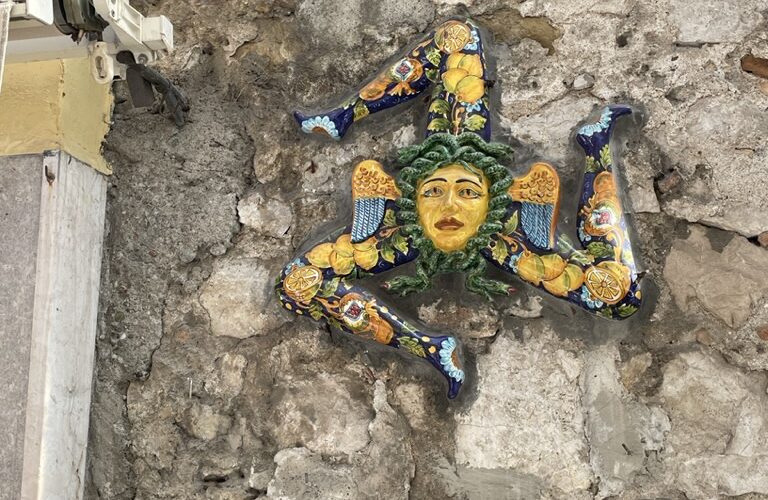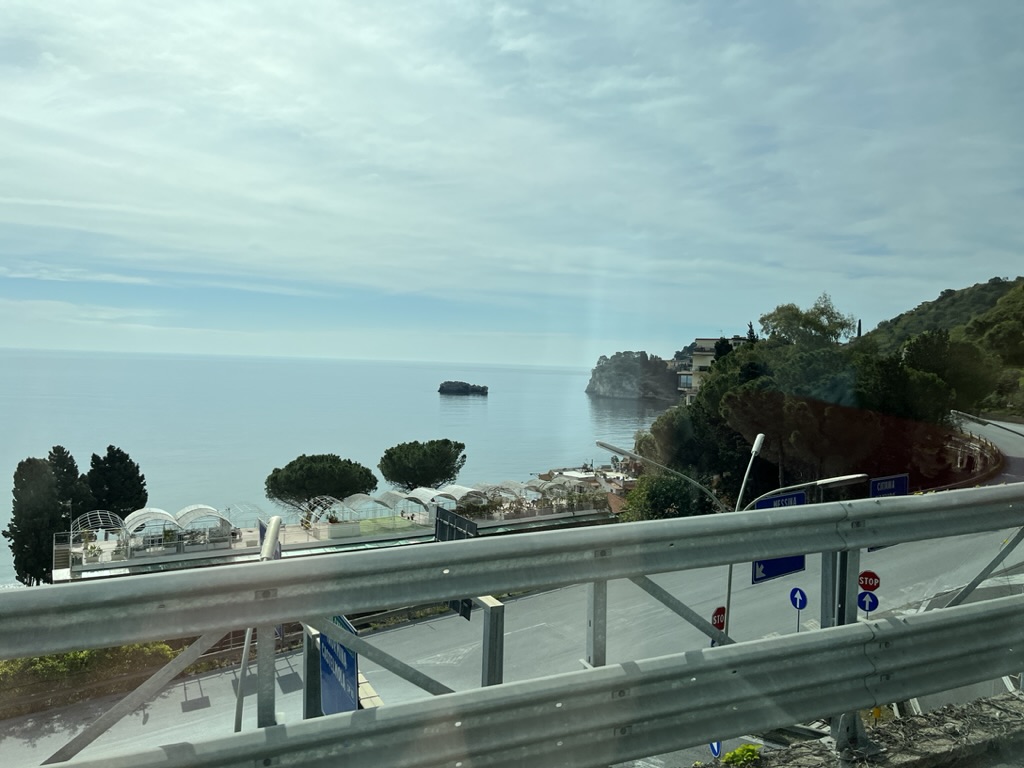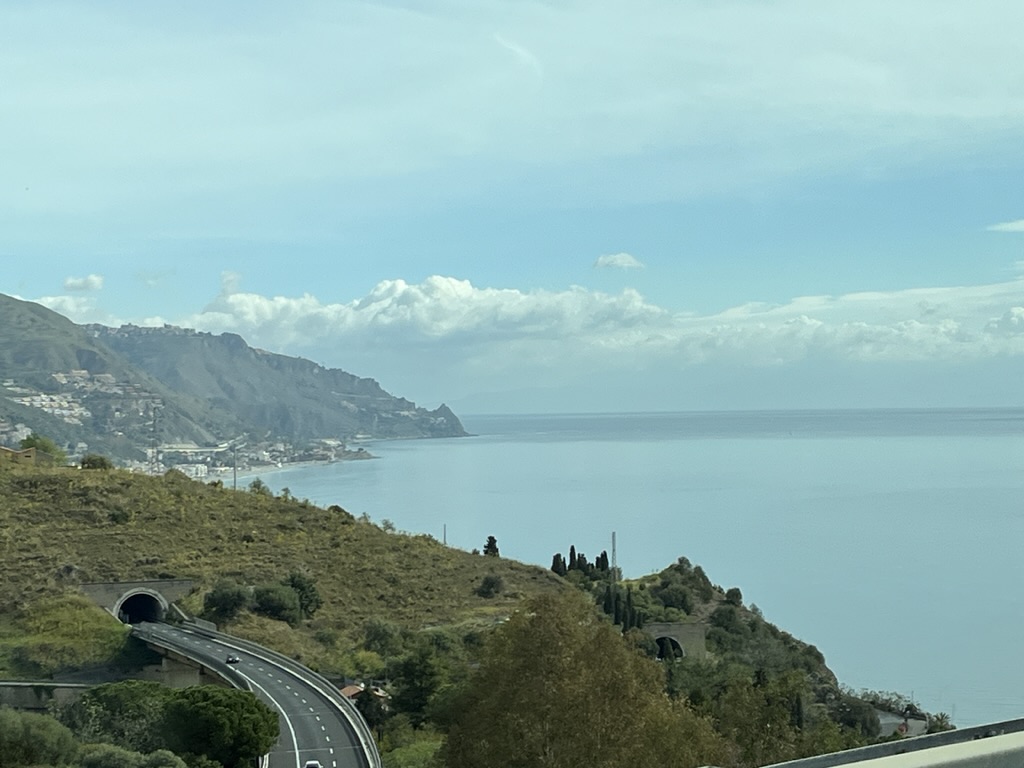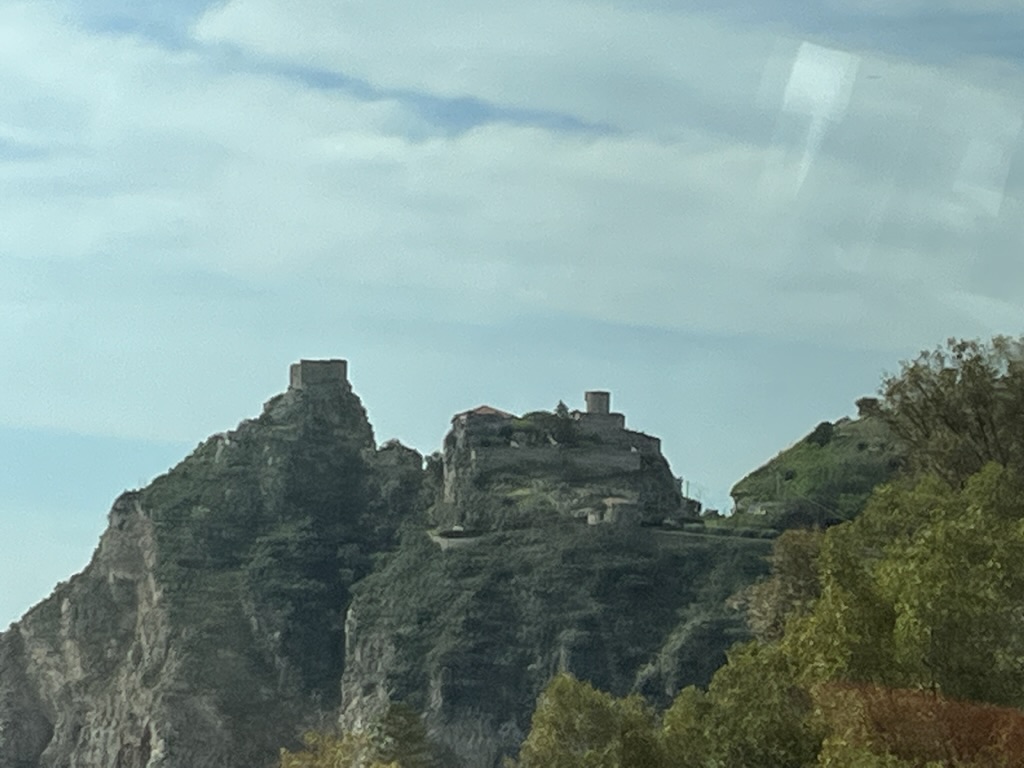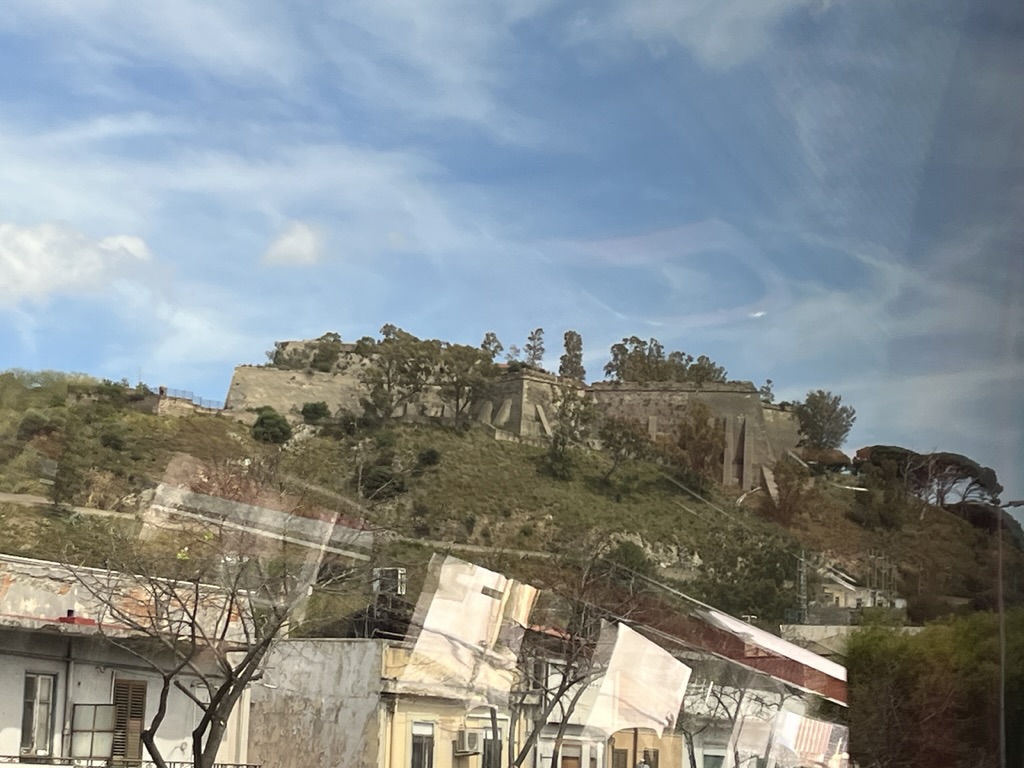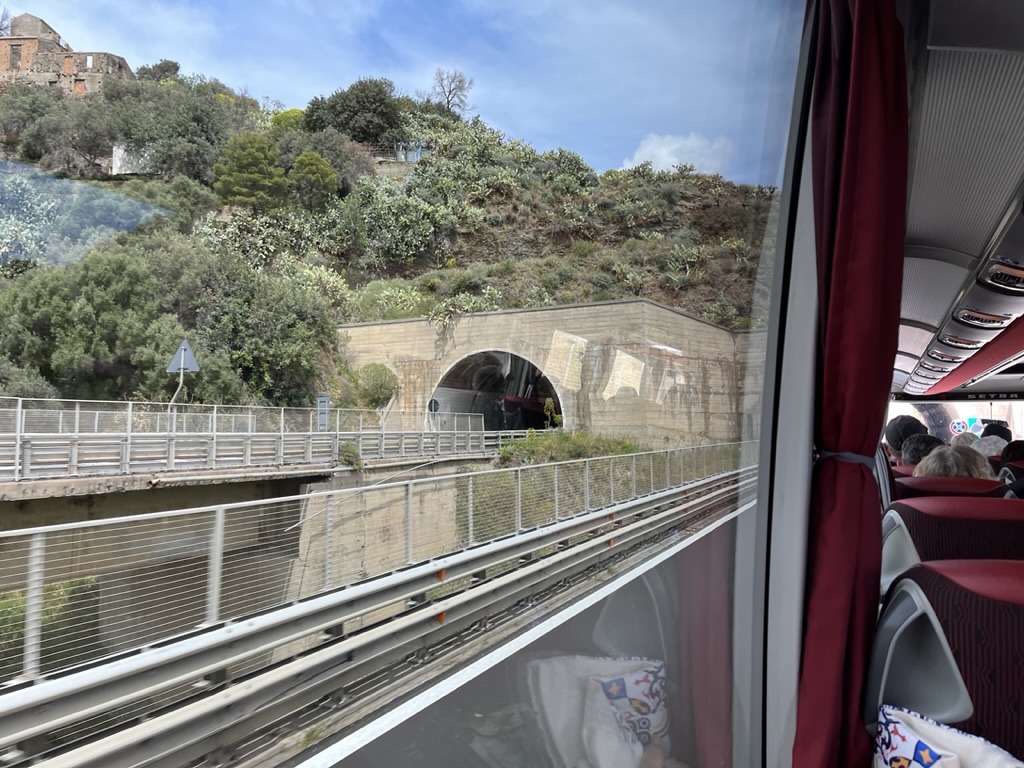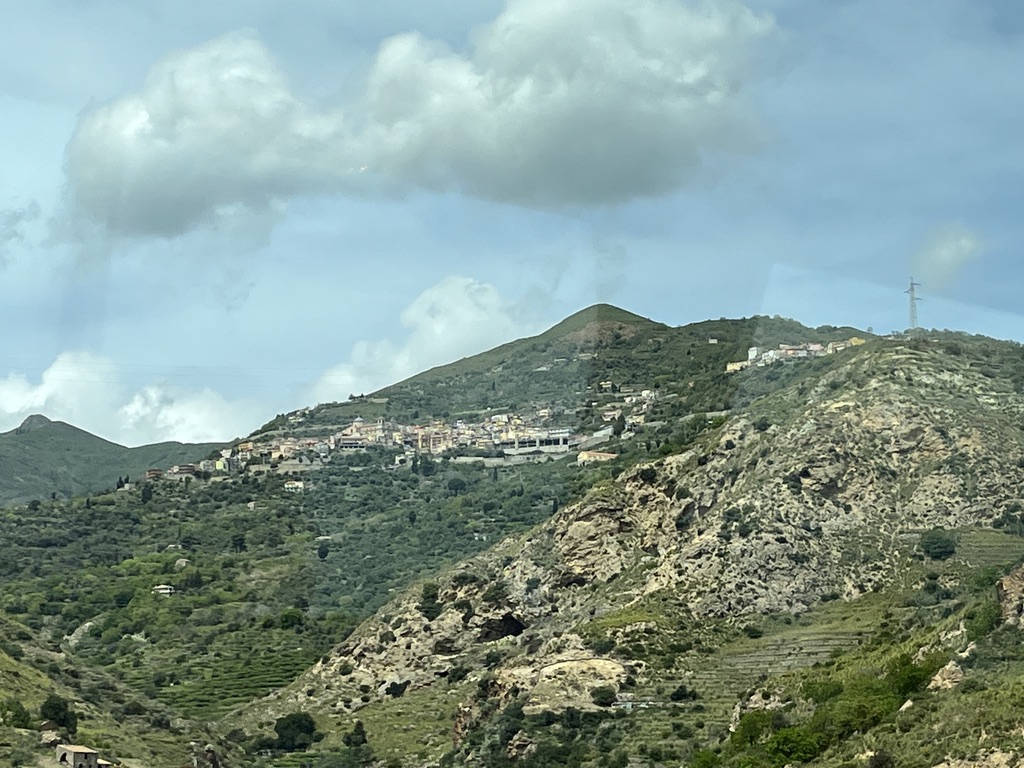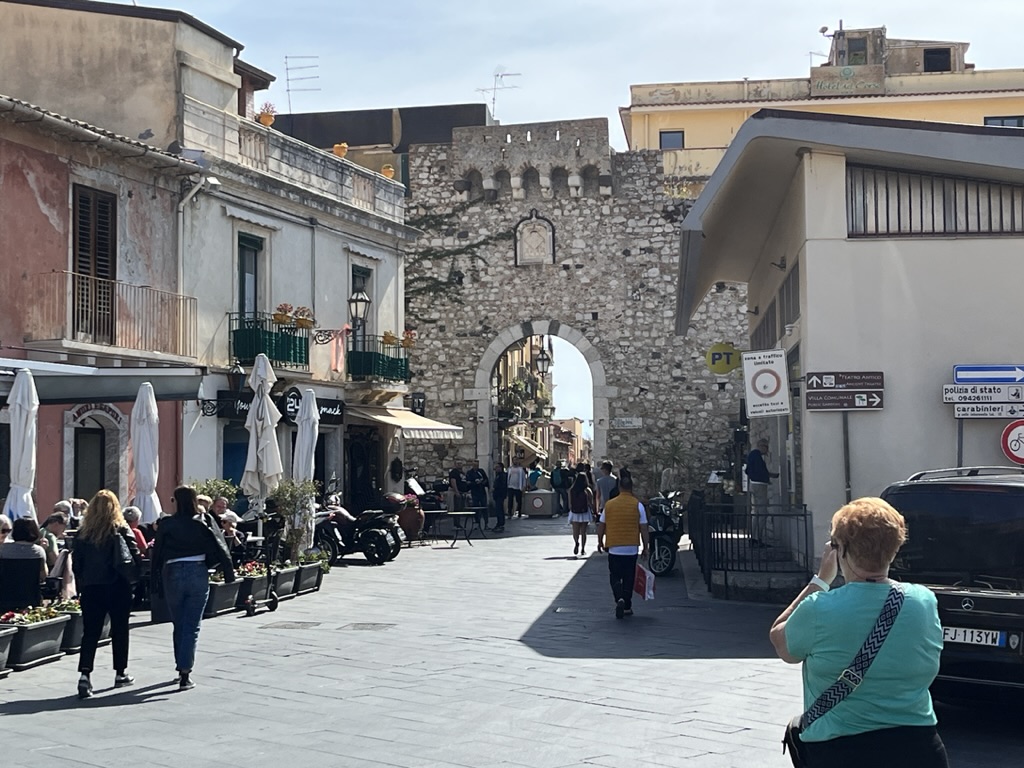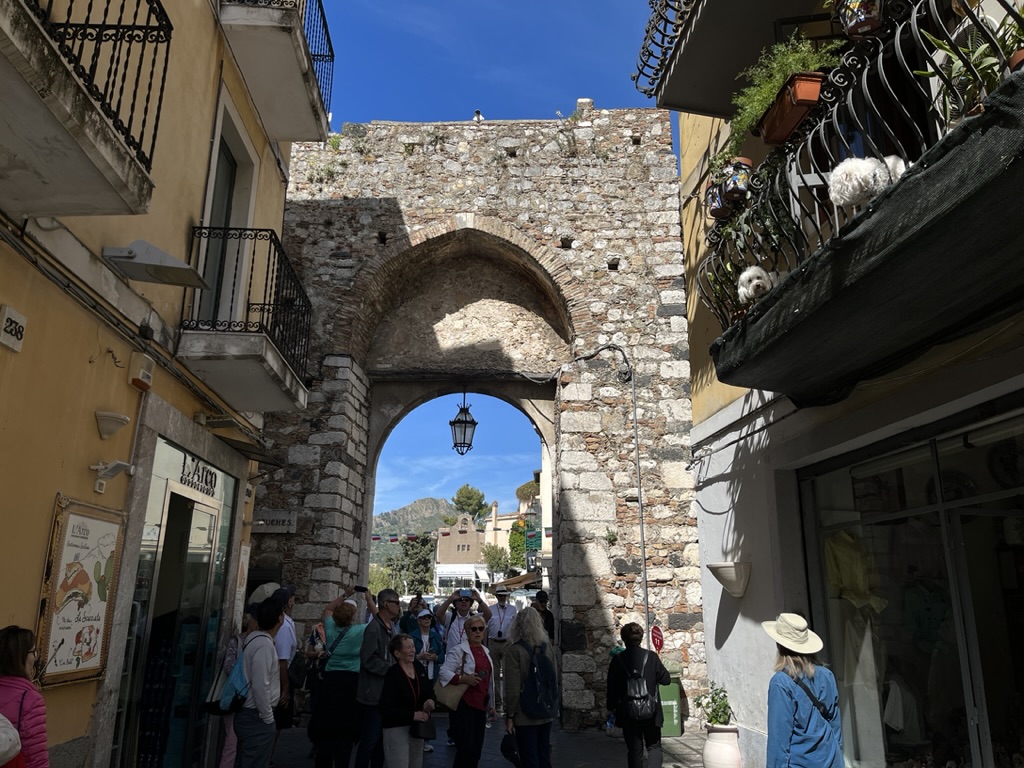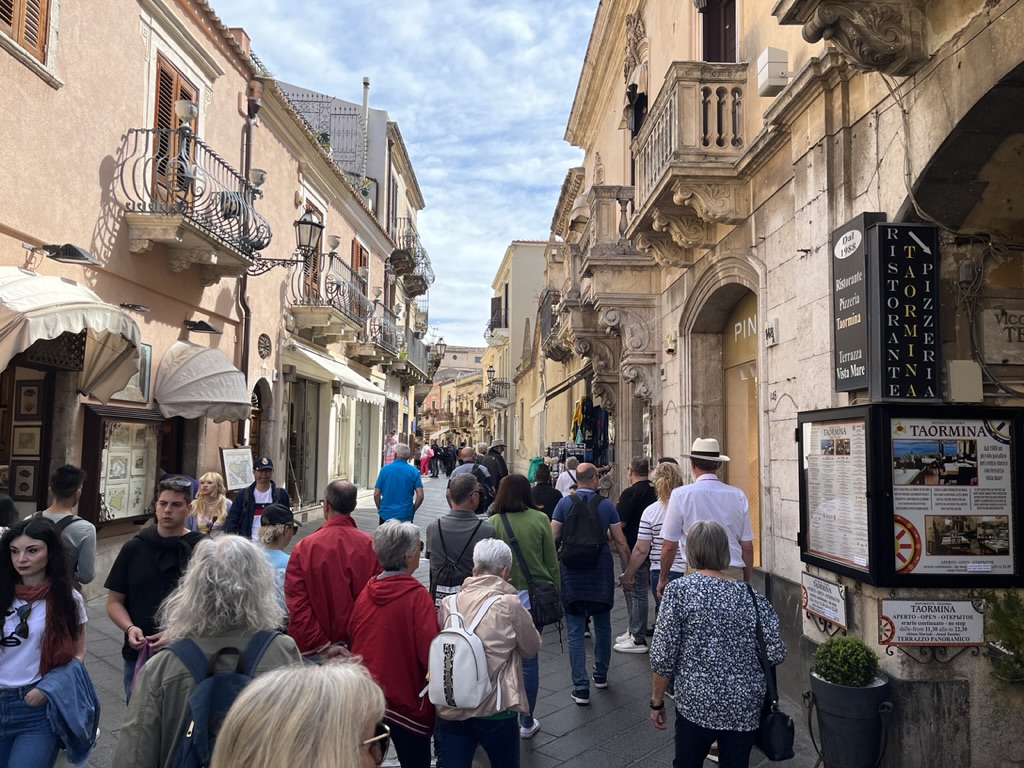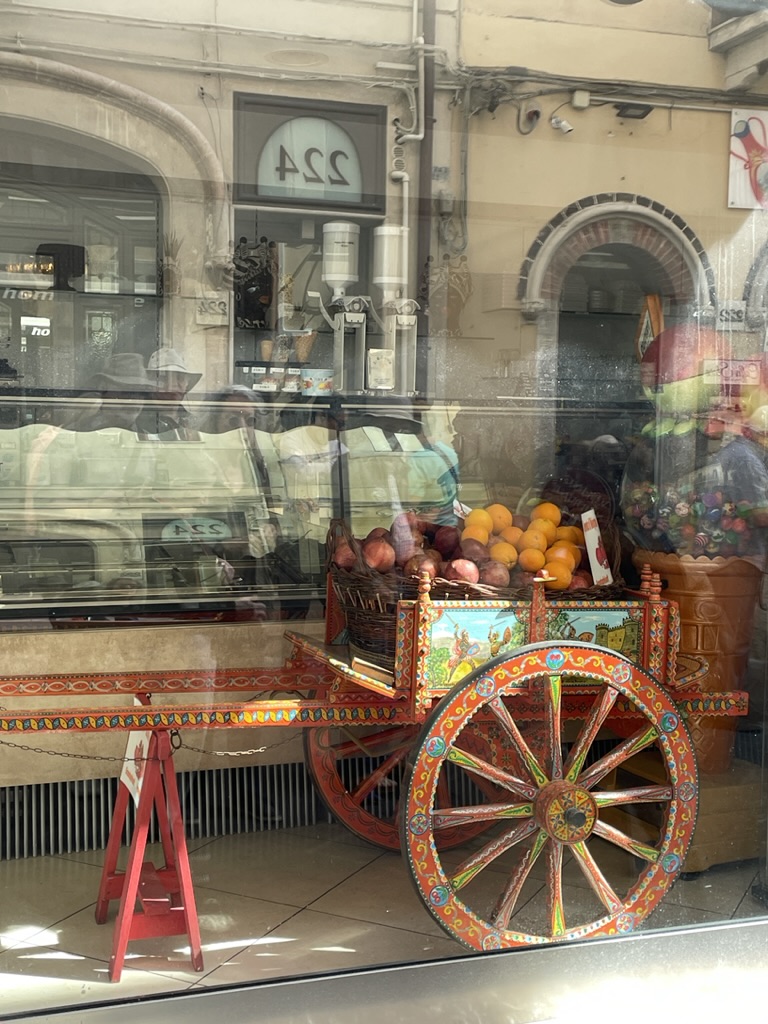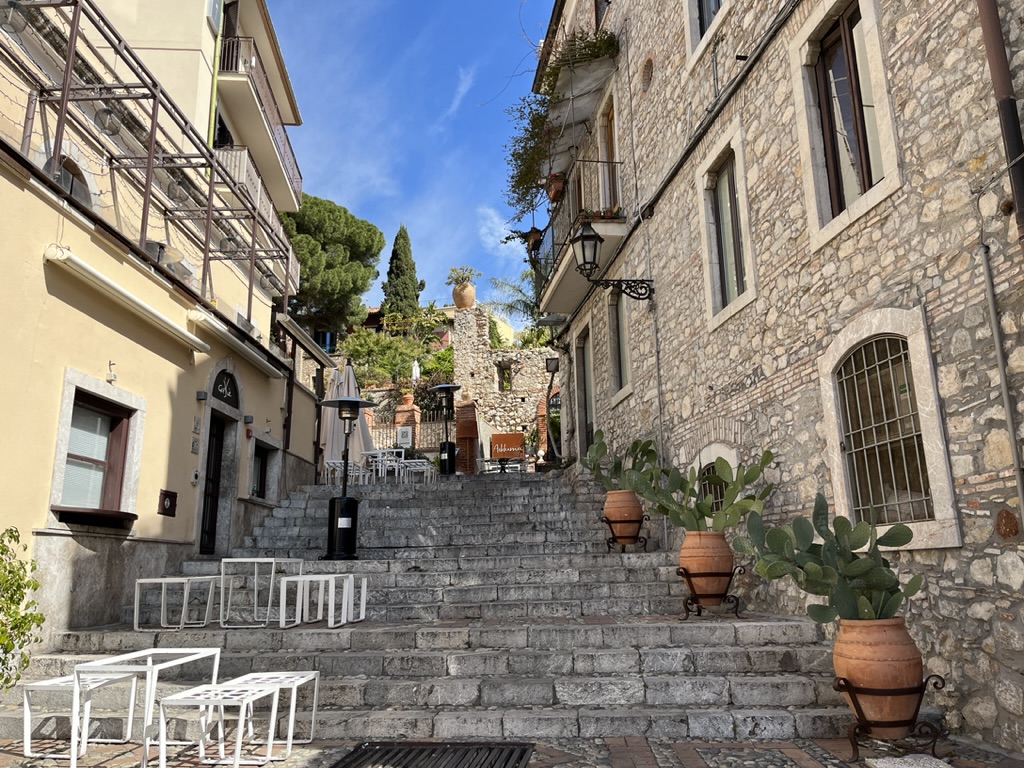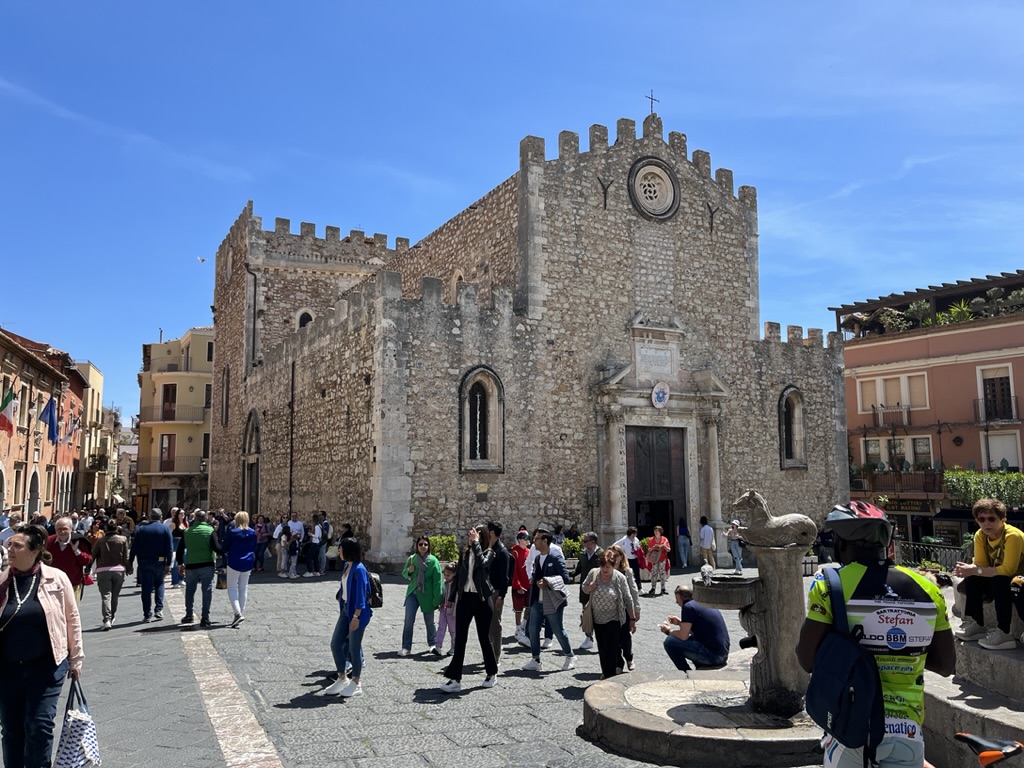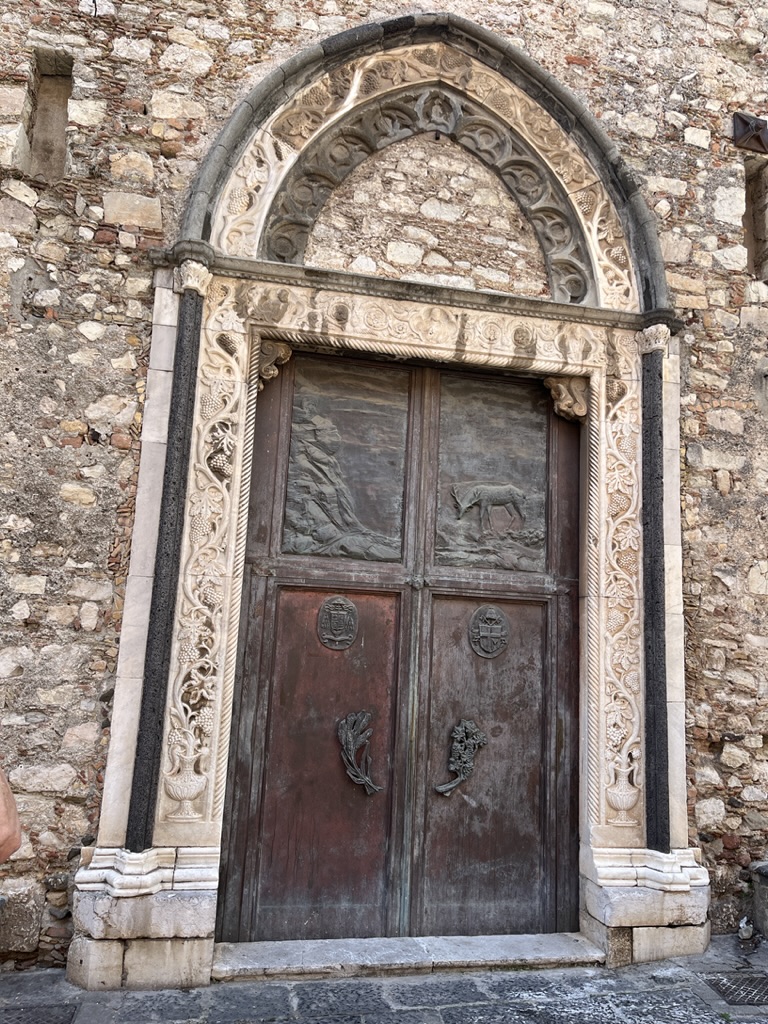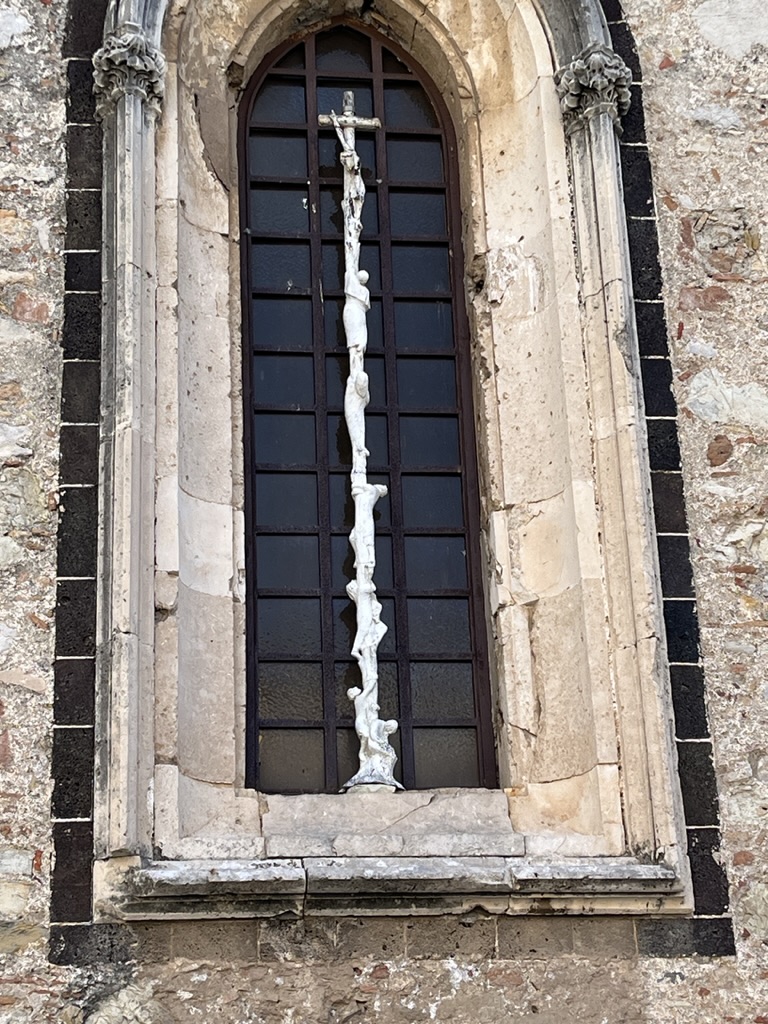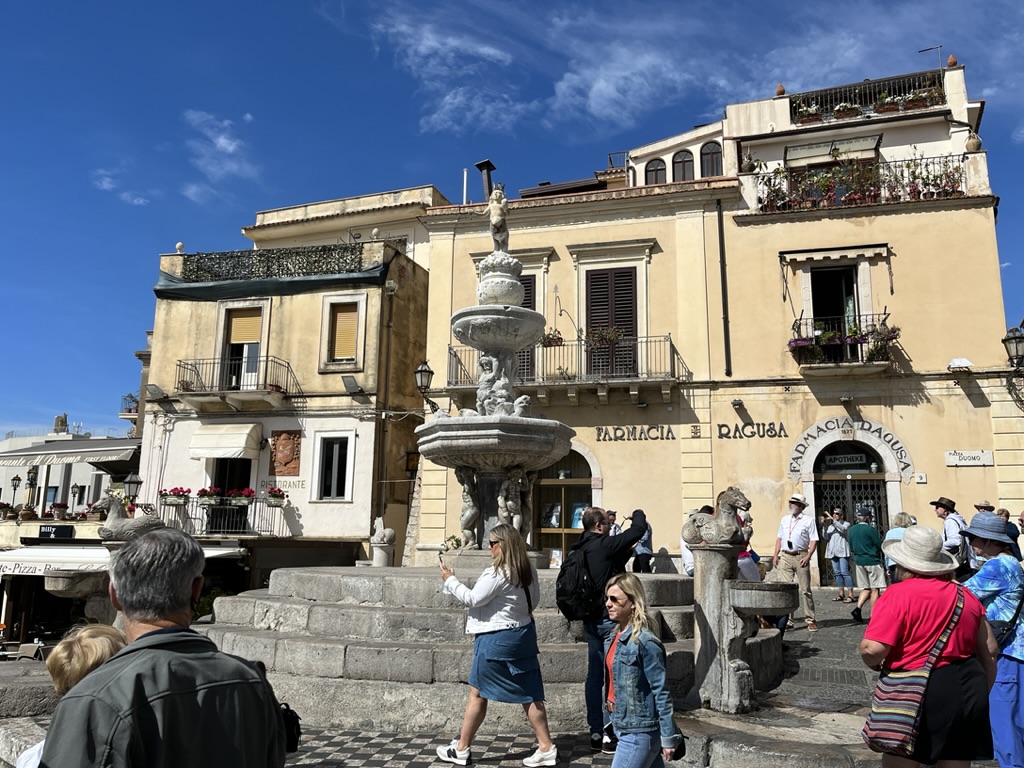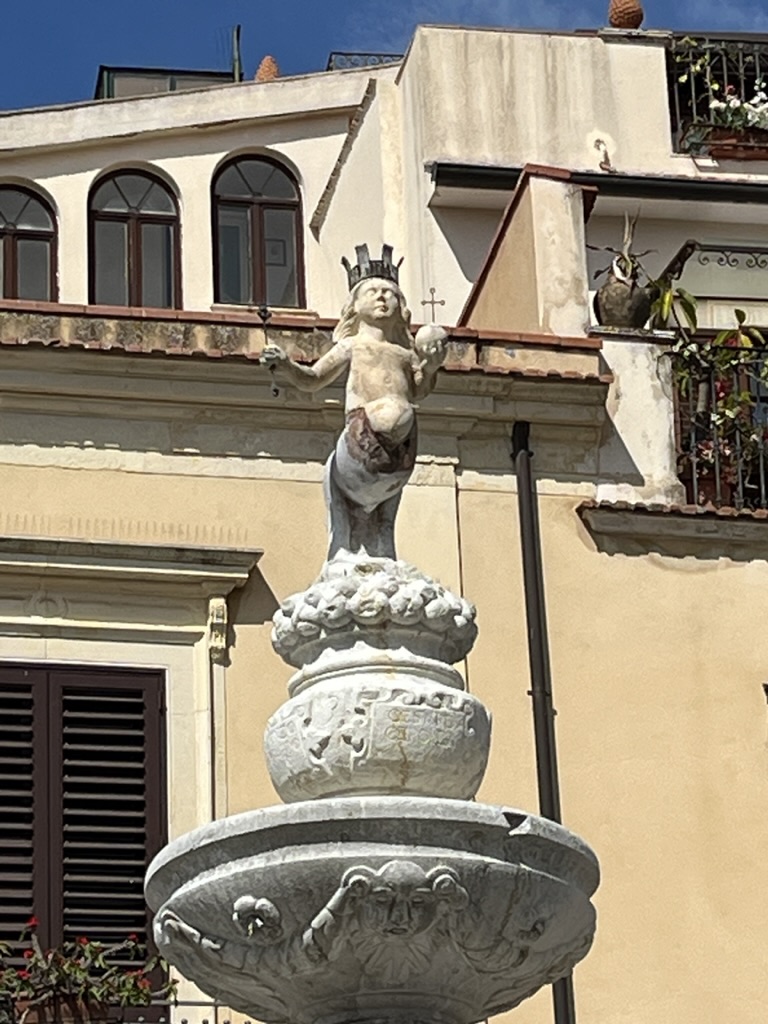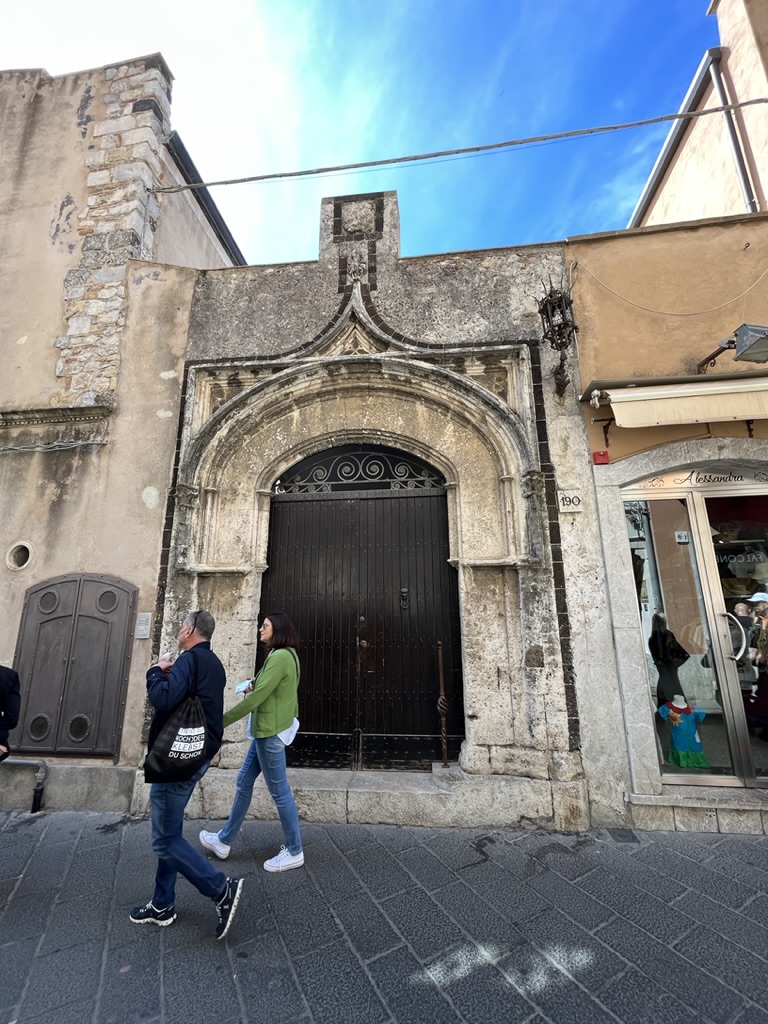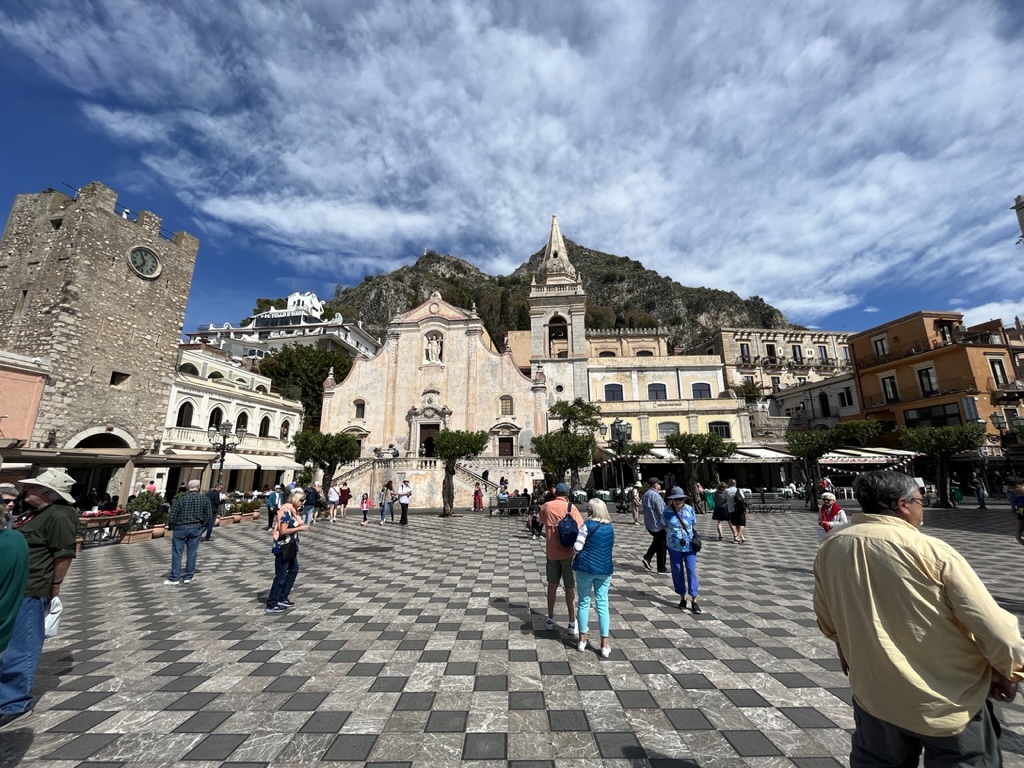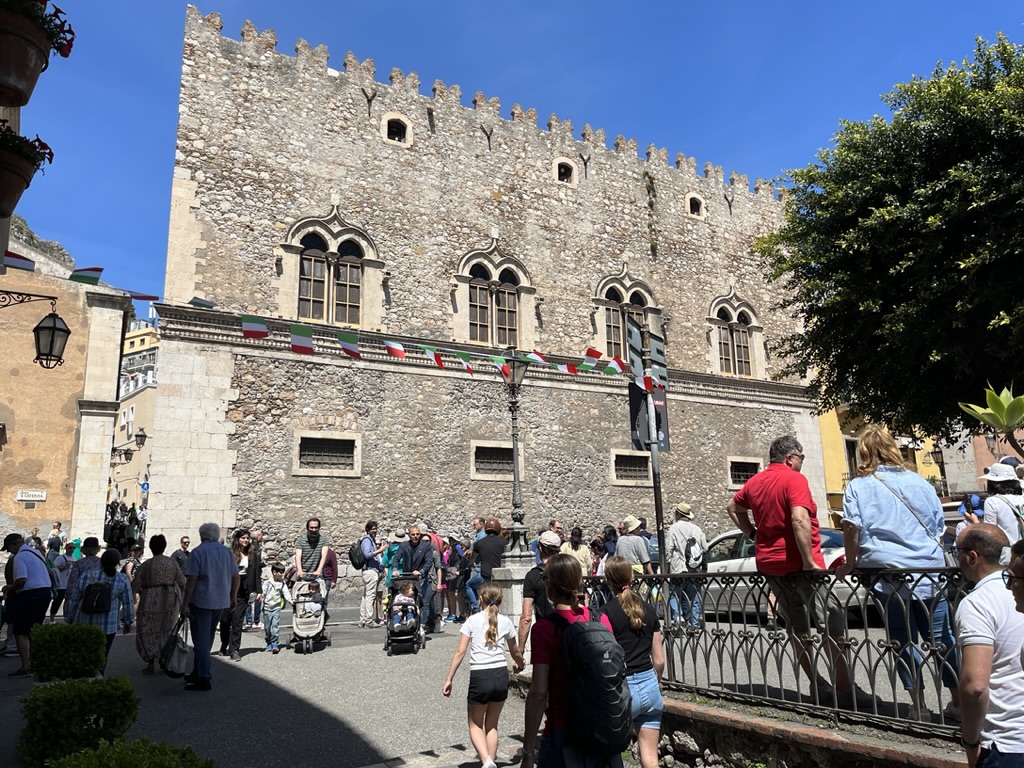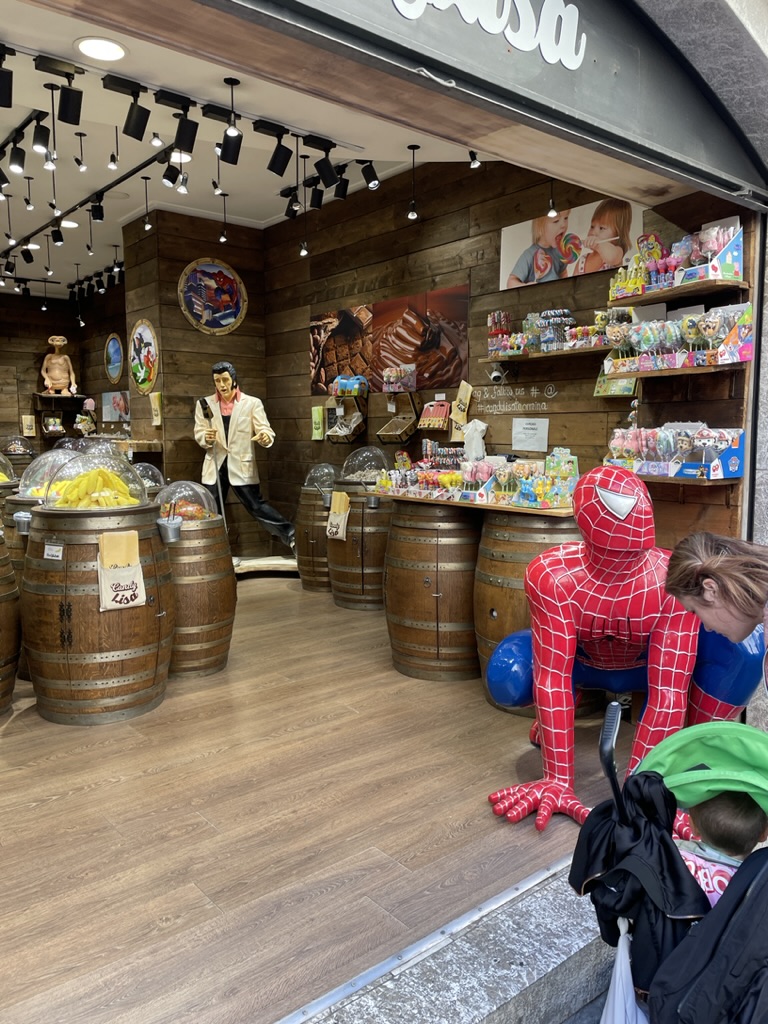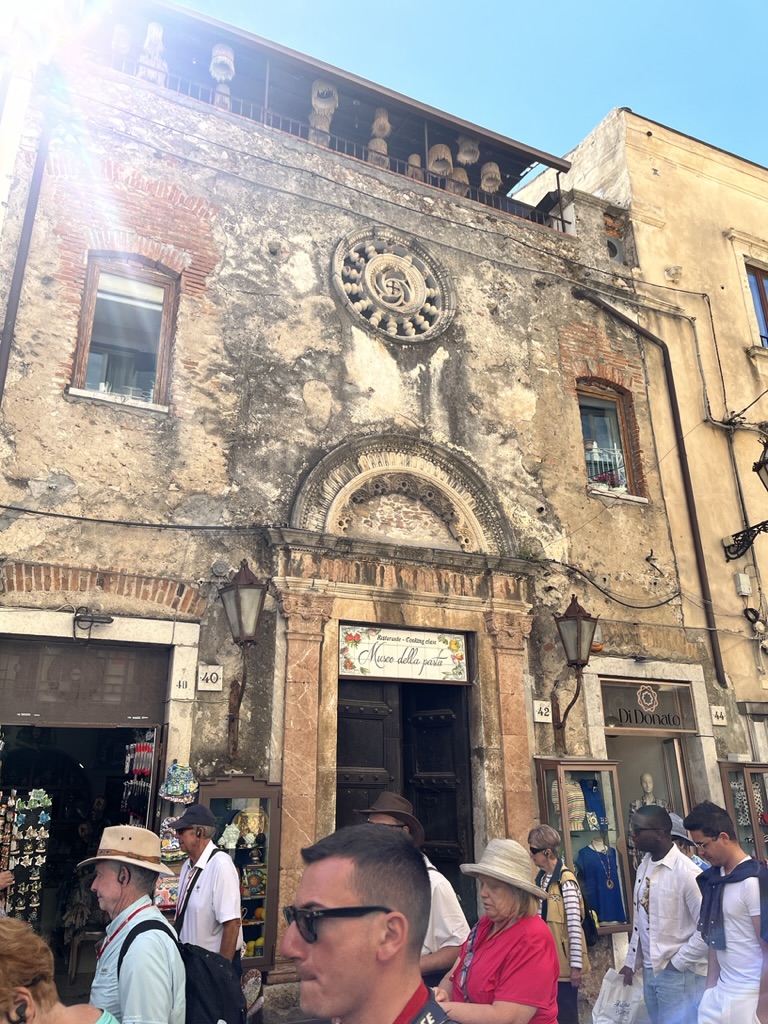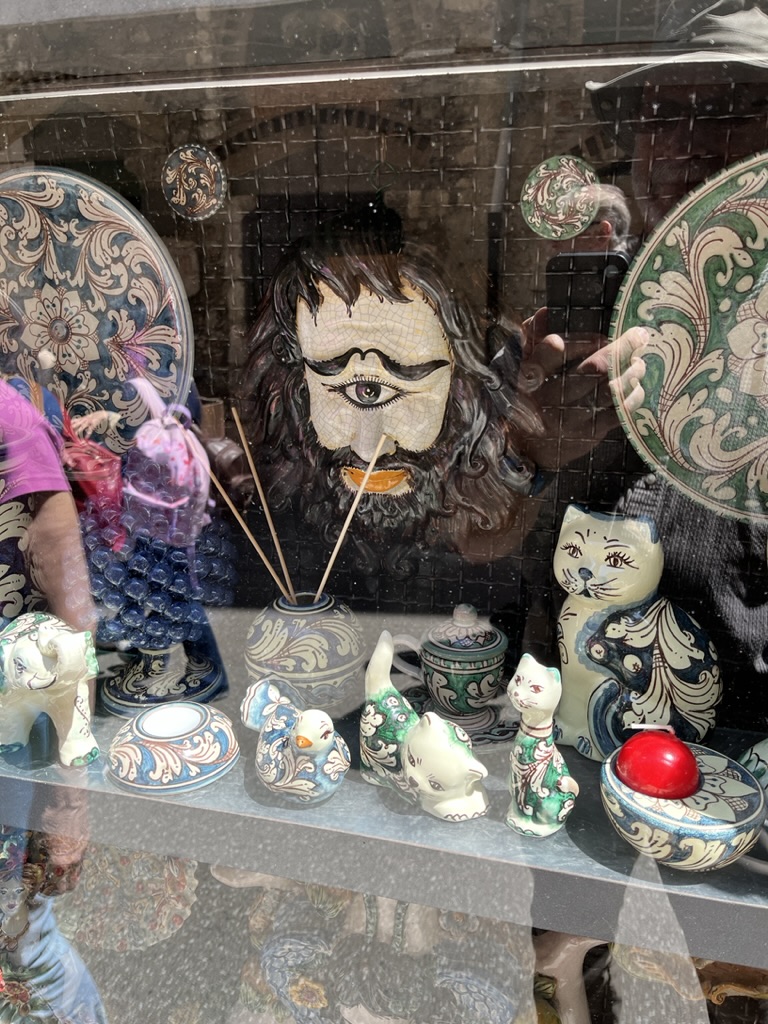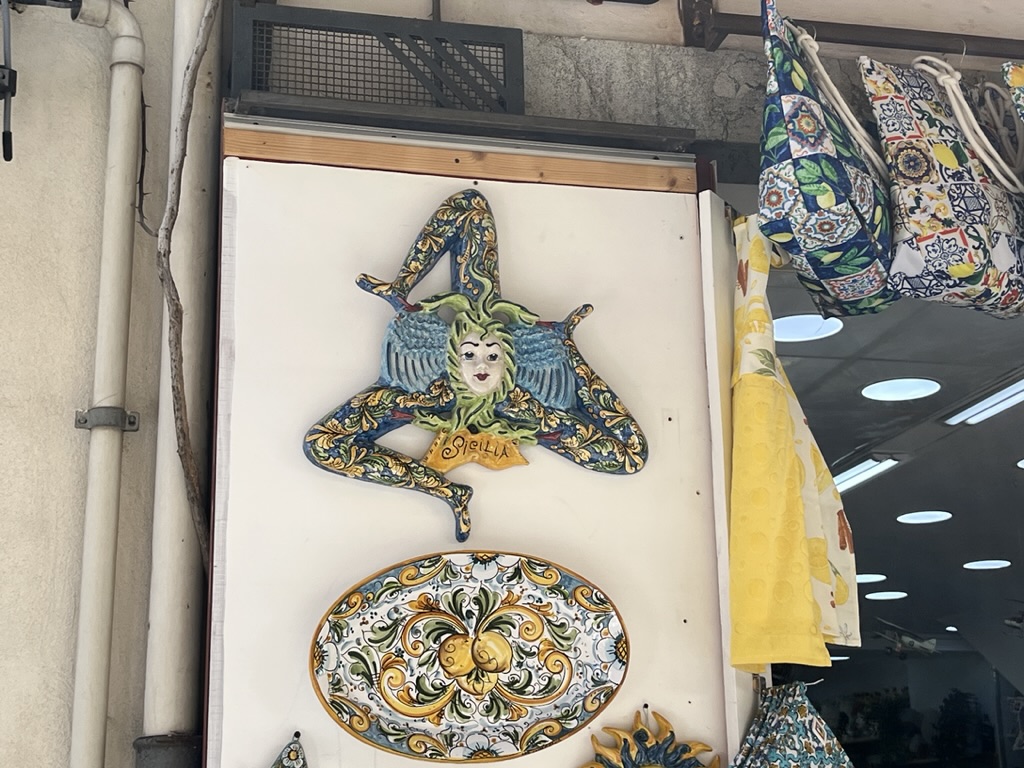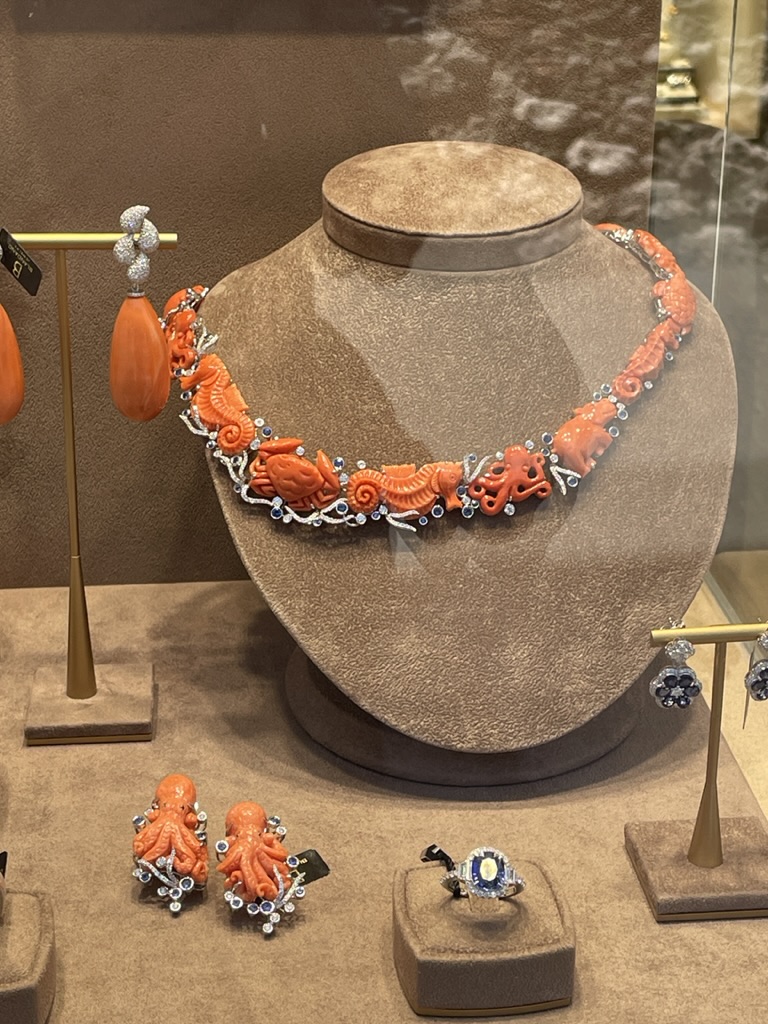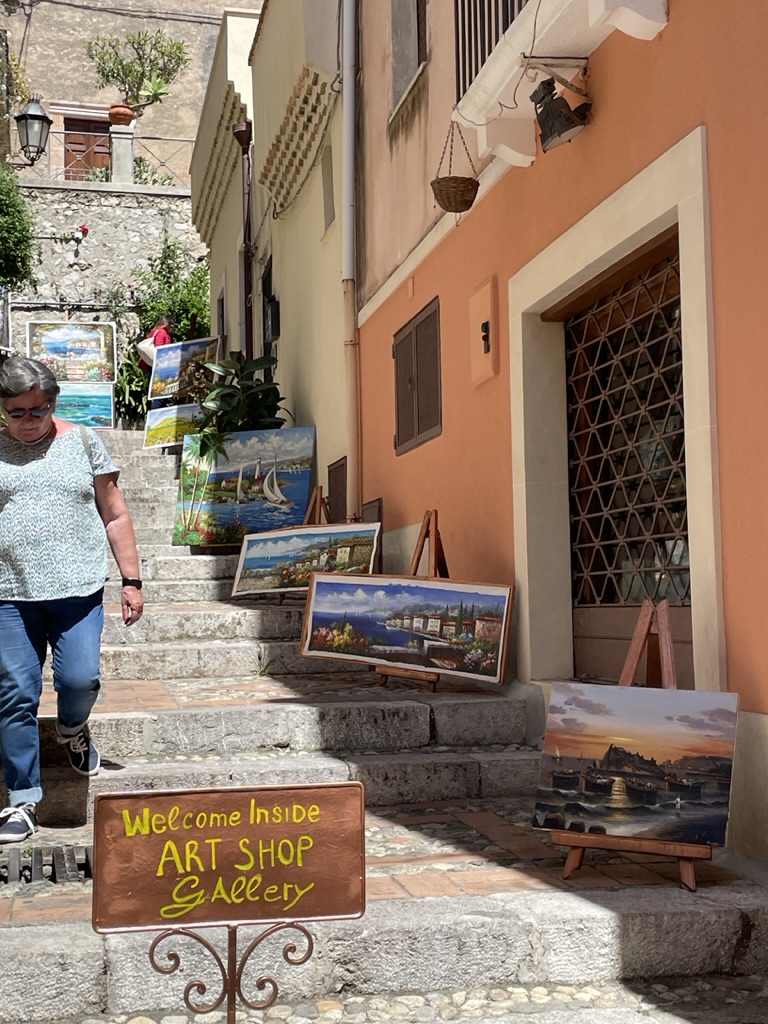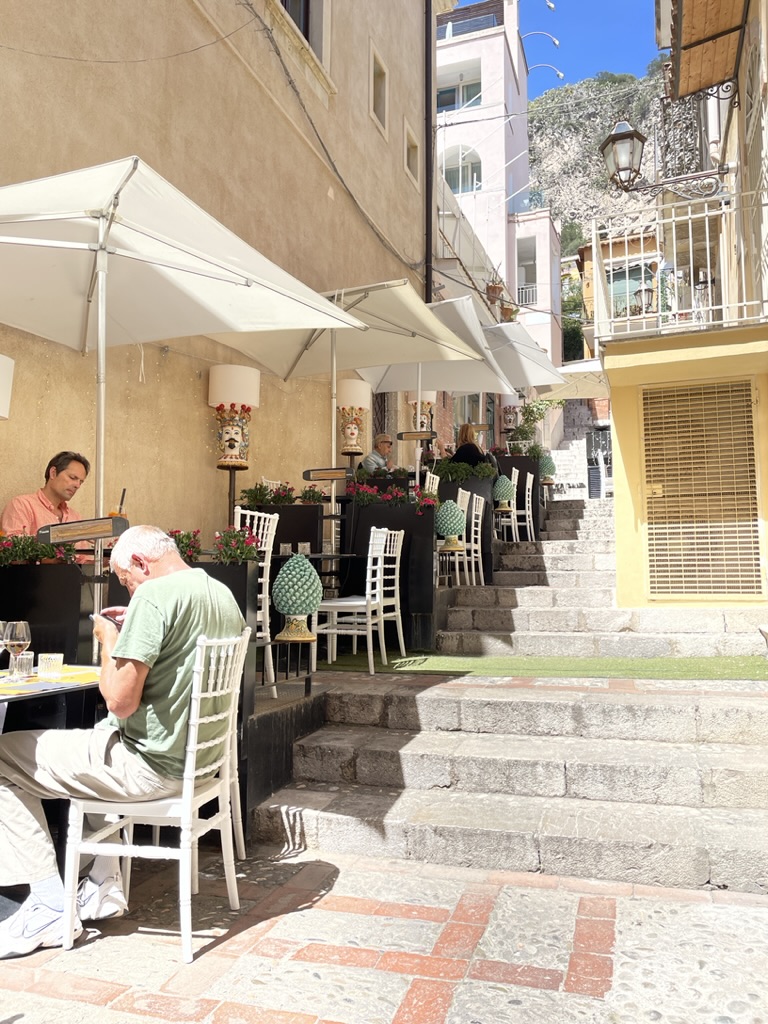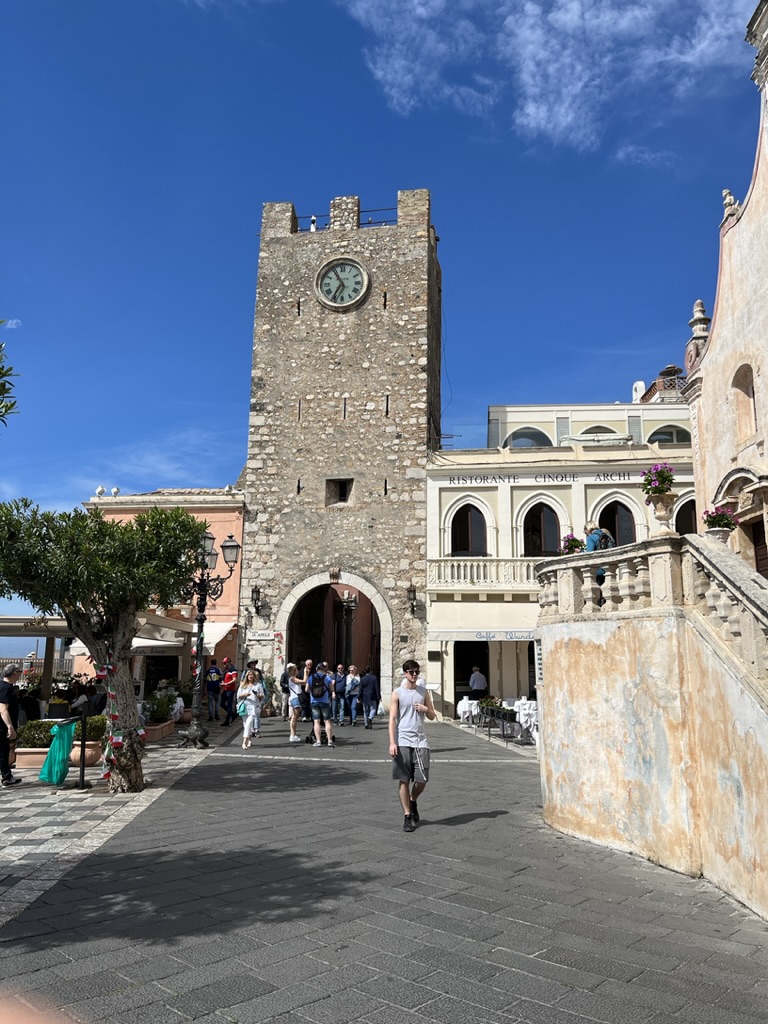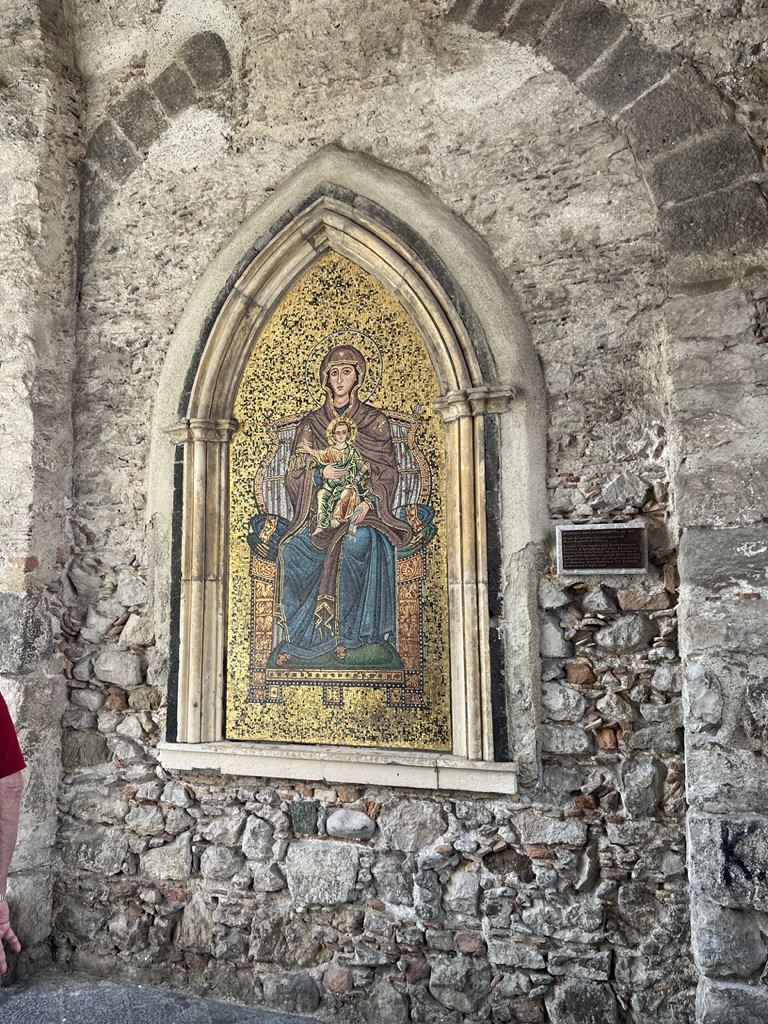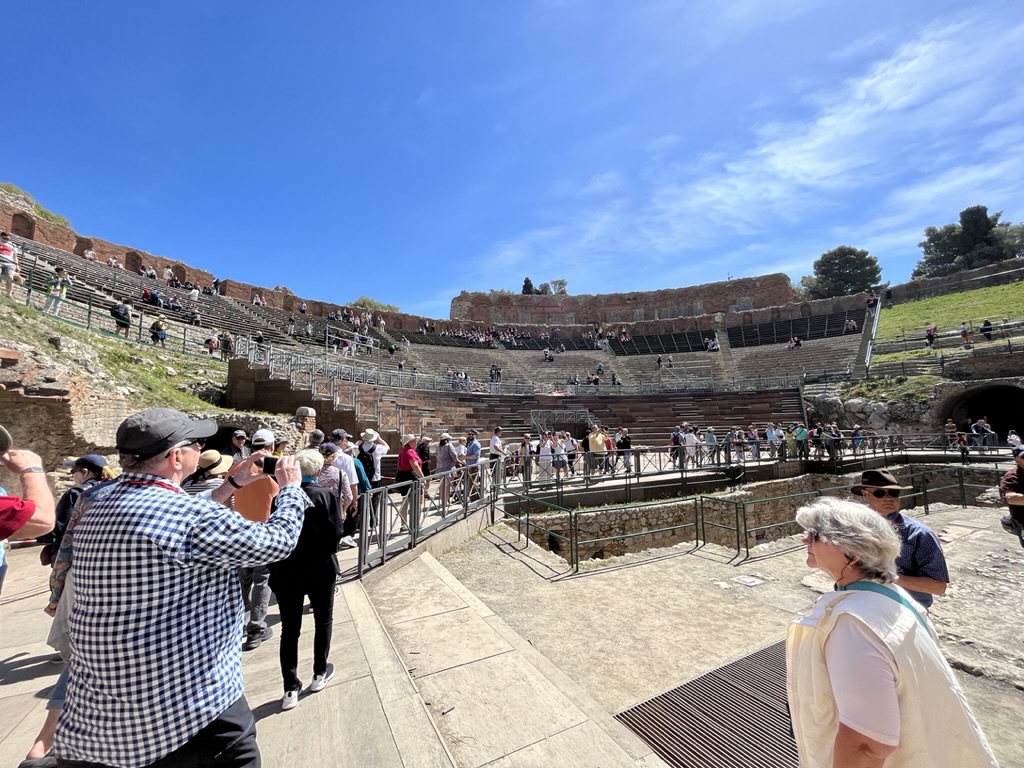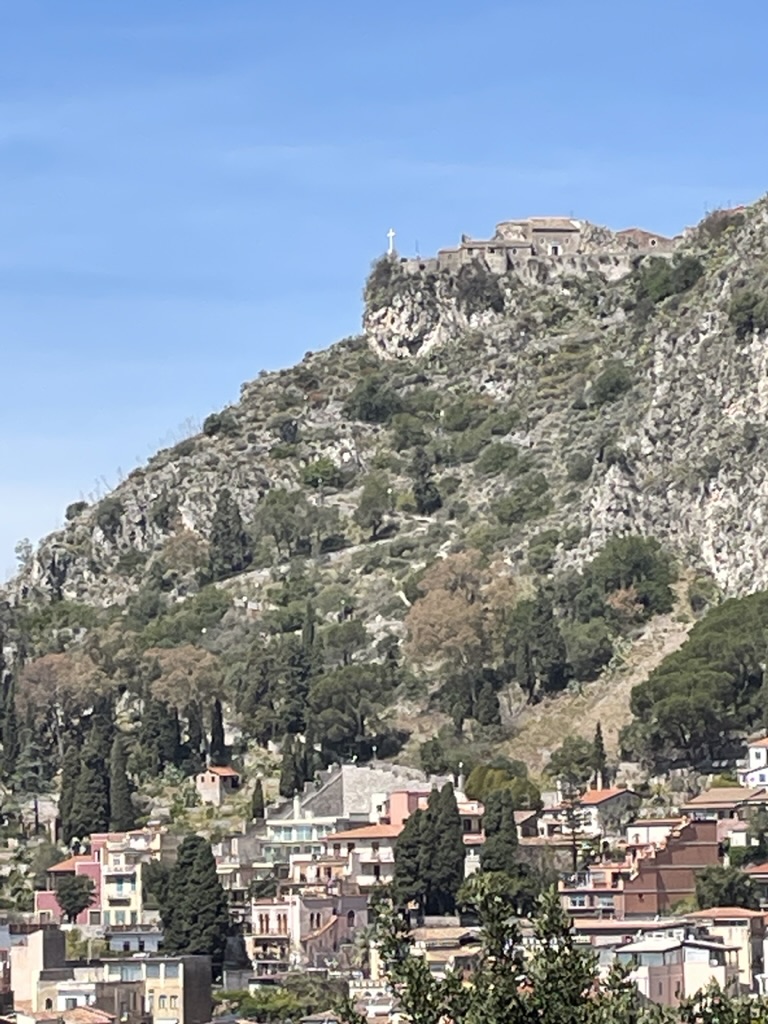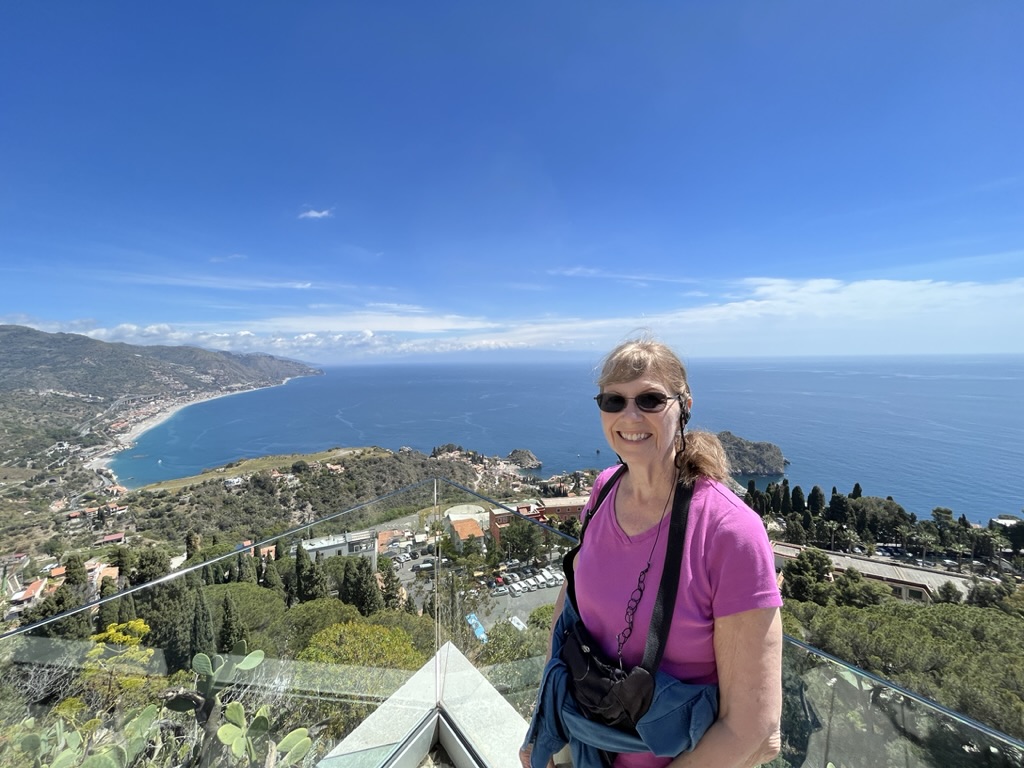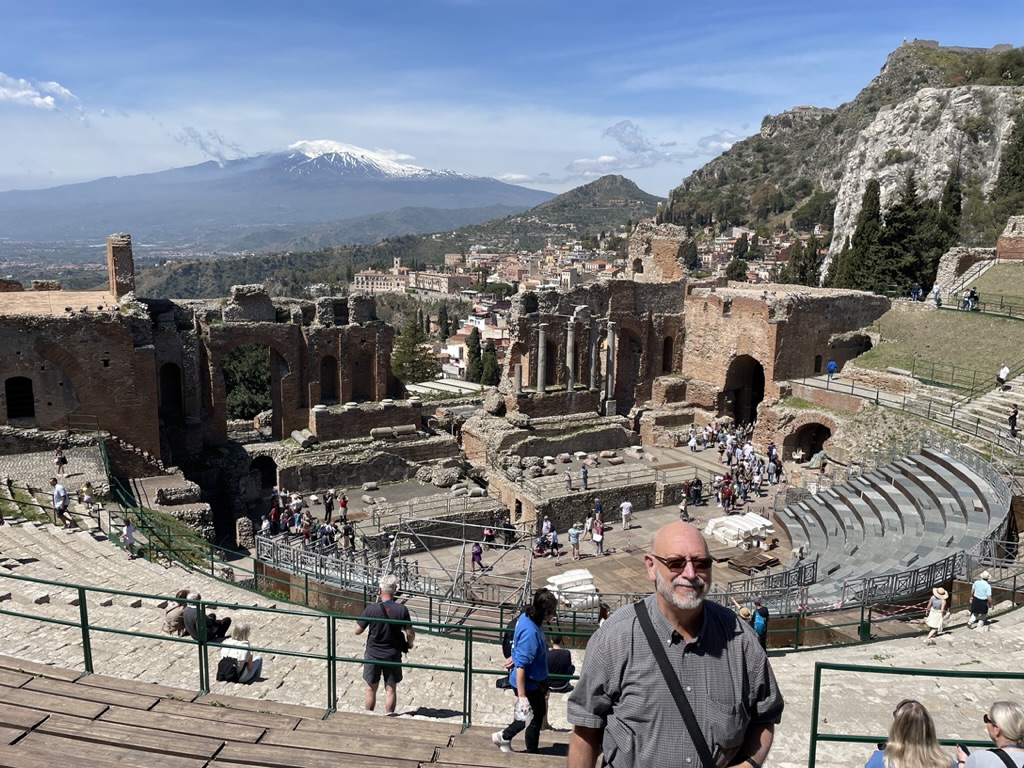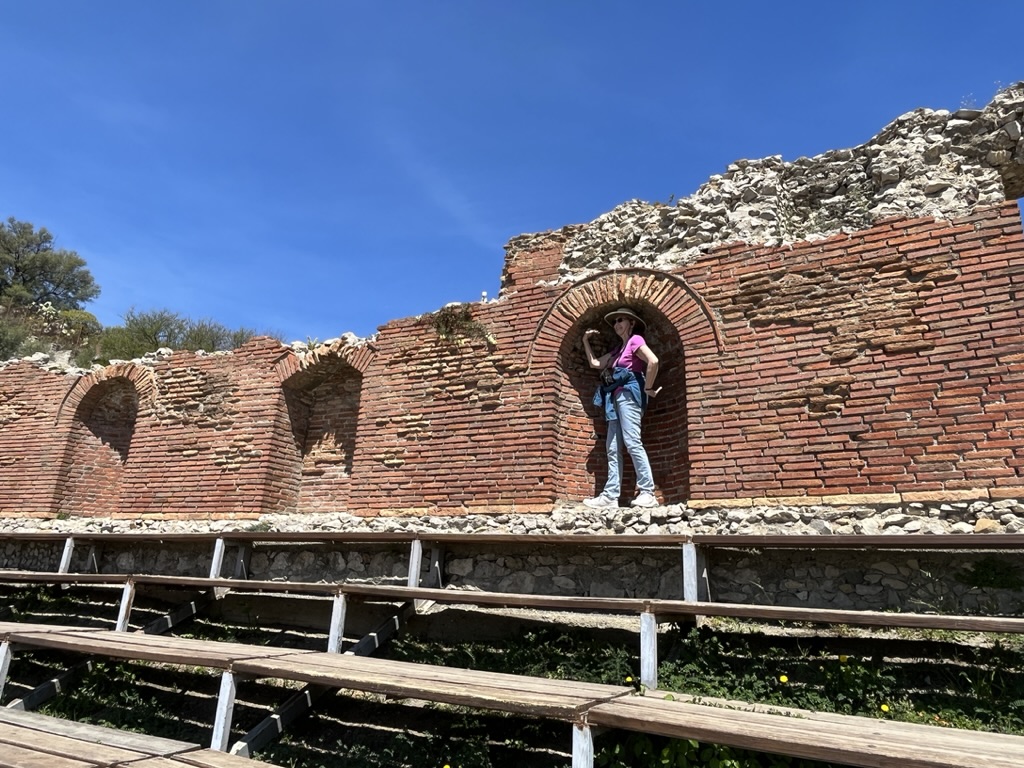Noon Report:
- Location: N 38° 11.76′, E 015° 33.49′
- Speed: Docked
- Course: Docked
- Weather: Partly Cloudy
- Temperature: 15º C; 59º F
- Wind: W 15 knots; 17 mph
Woke up this morning docked in Messina on the island of Sicily.
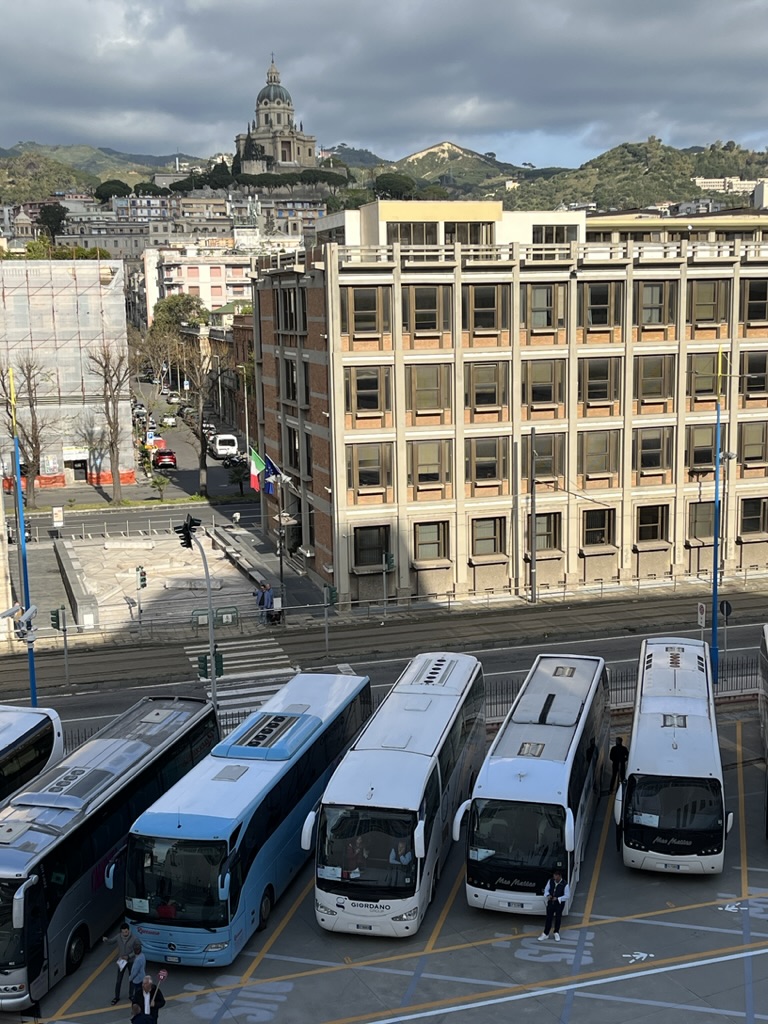
Our excursion call was 8:45 so we slept a bit later and had a leisurely breakfast before presenting on the dock to join our tour.
While we were at breakfast another ship sailed in and docked.
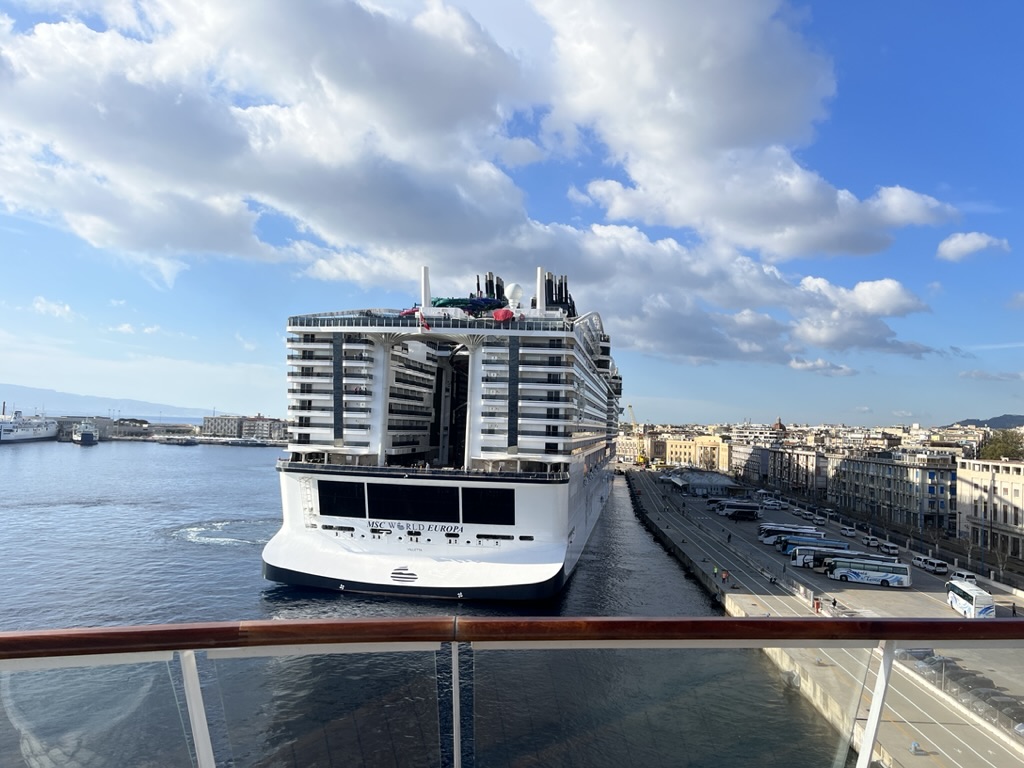
Once on the bus we headed thru town on our way to the hill town of Taormina.
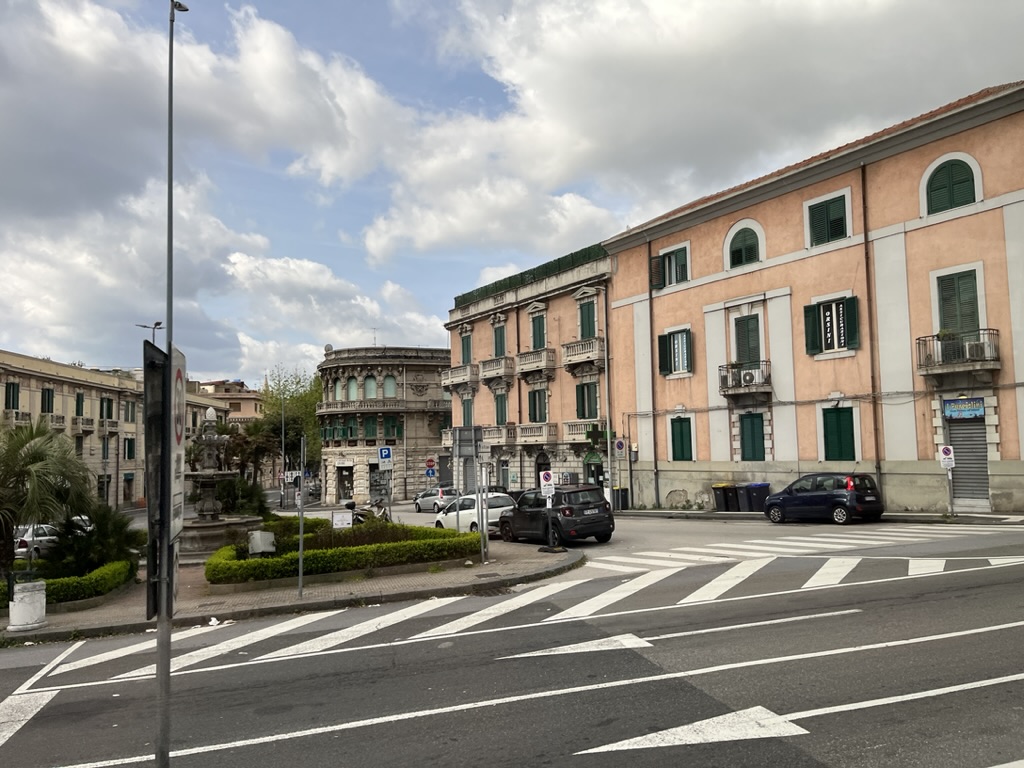
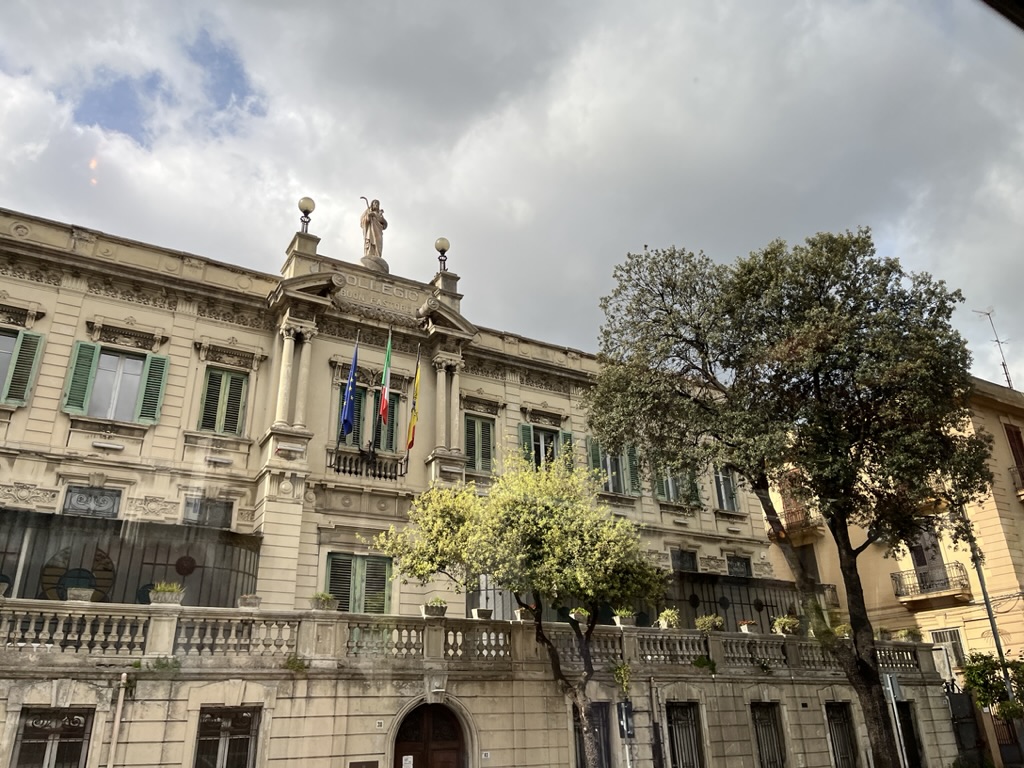
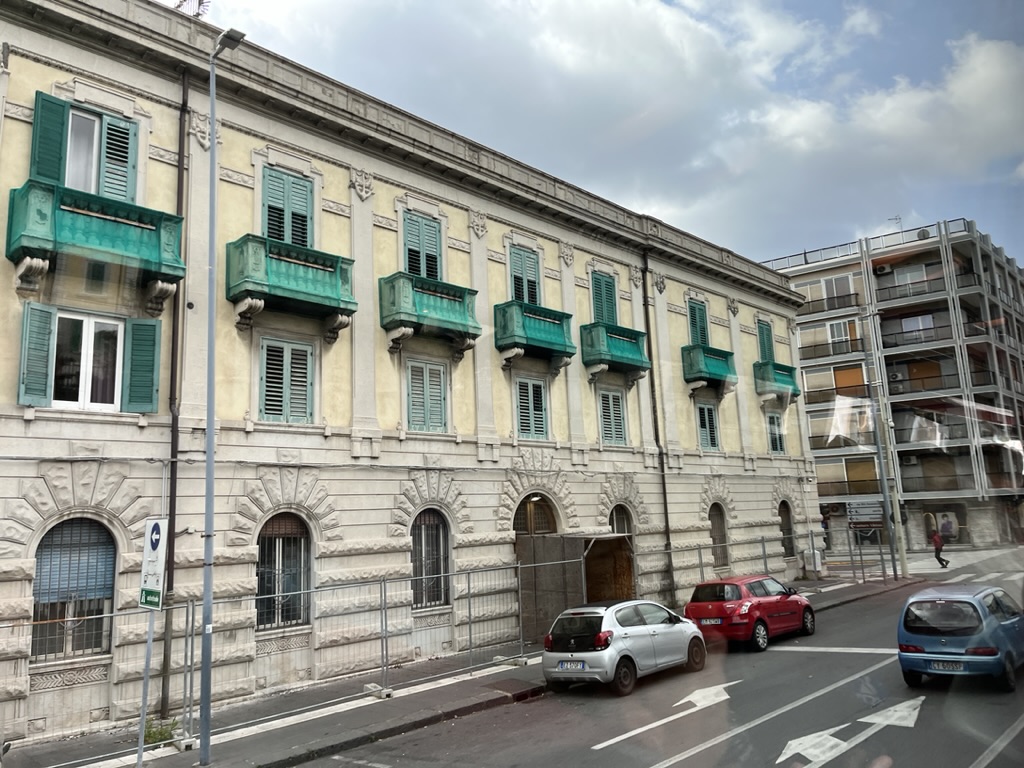
If the town looks empty, that’s because it is. It’s “Liberation Day” – commemorating the day the fascist regime was removed from Italy. So offices and most stores are closed (the people are on holiday which means lots of them are going to go see the amphitheater ruins at Taormina too).
Along the way we watched the scenery unfold outside our bus window.
Arriving at Taormina, a city built up on a very steep hill, we parked in the local parking garage (level 1) and took the elevator up to level 7 – where we exited onto a plaza.
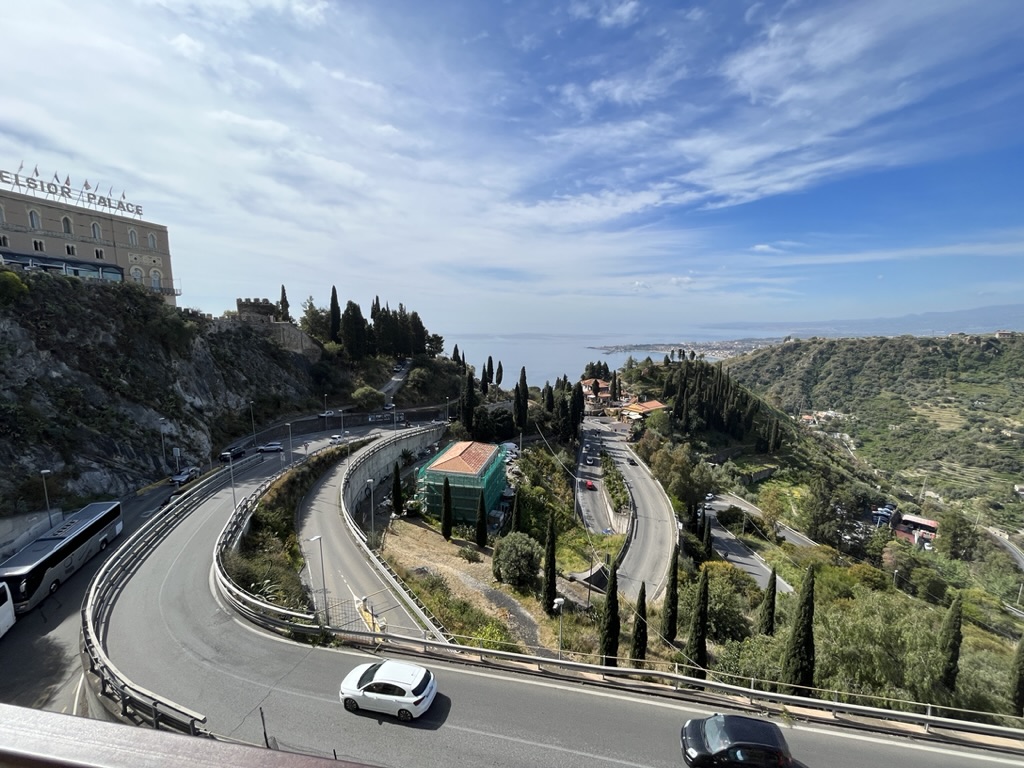
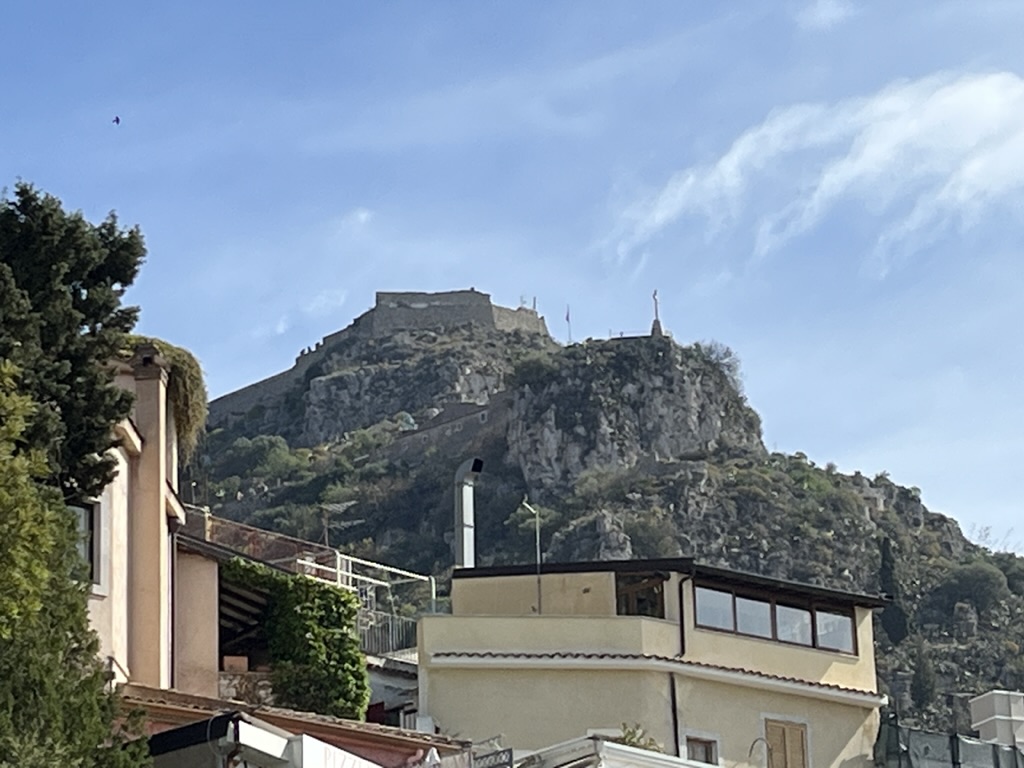
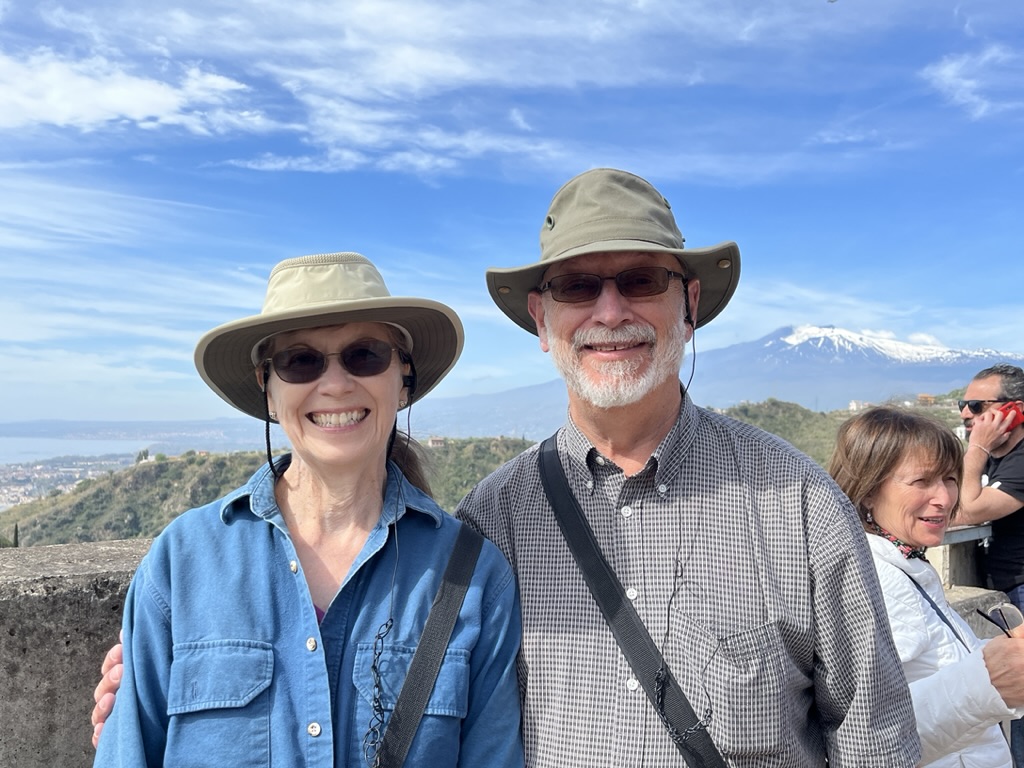
Once we all made it upstairs and had our fluid levels adjusted we set off on a walk thru town. Like many hill towns there is really only one main street with small lanes branching off, so it’s pretty hard to get lost.
At the end of the street we came to the amphitheater.
After talking about the theatre for a bit the guide turned us loose and we wandered back thru town, stopping to buy a small gift along the way but avoiding the temptation to stop for “real” cannoli. Of course we “didn’t have a gun to leave” so we didn’t feel right about “taking the cannoli” (famous scene from “The Godfather” movie).
As we wandered, we noticed many window boxes that had some representation of a light-skinned female head and a dark-skinned male head:
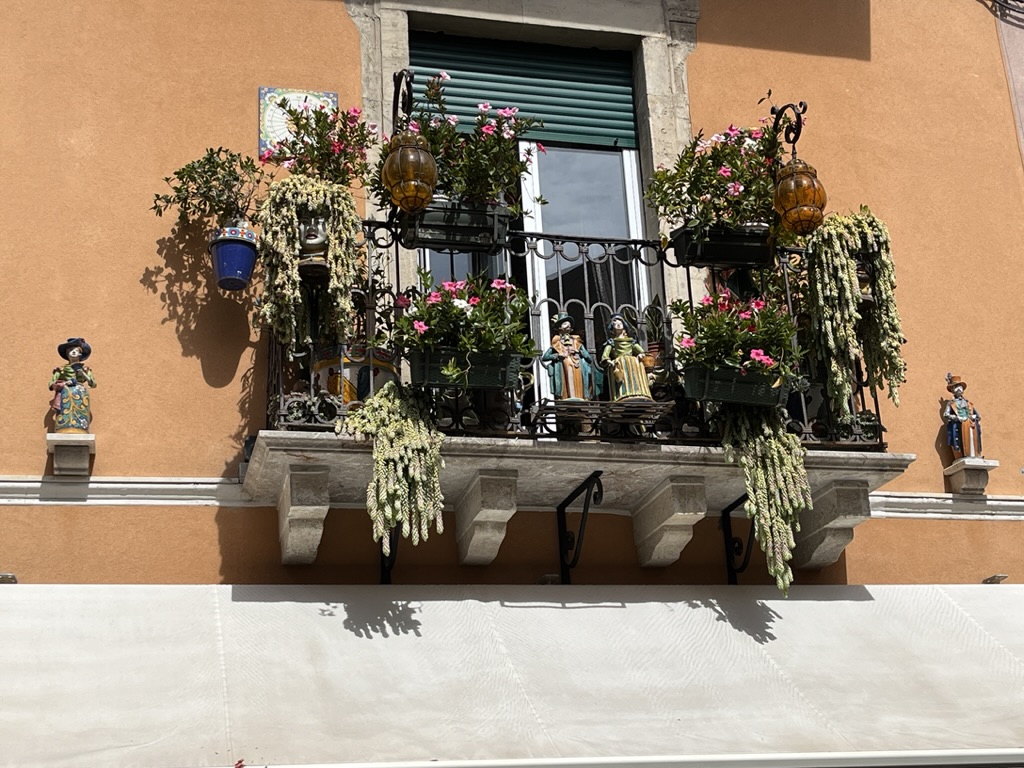
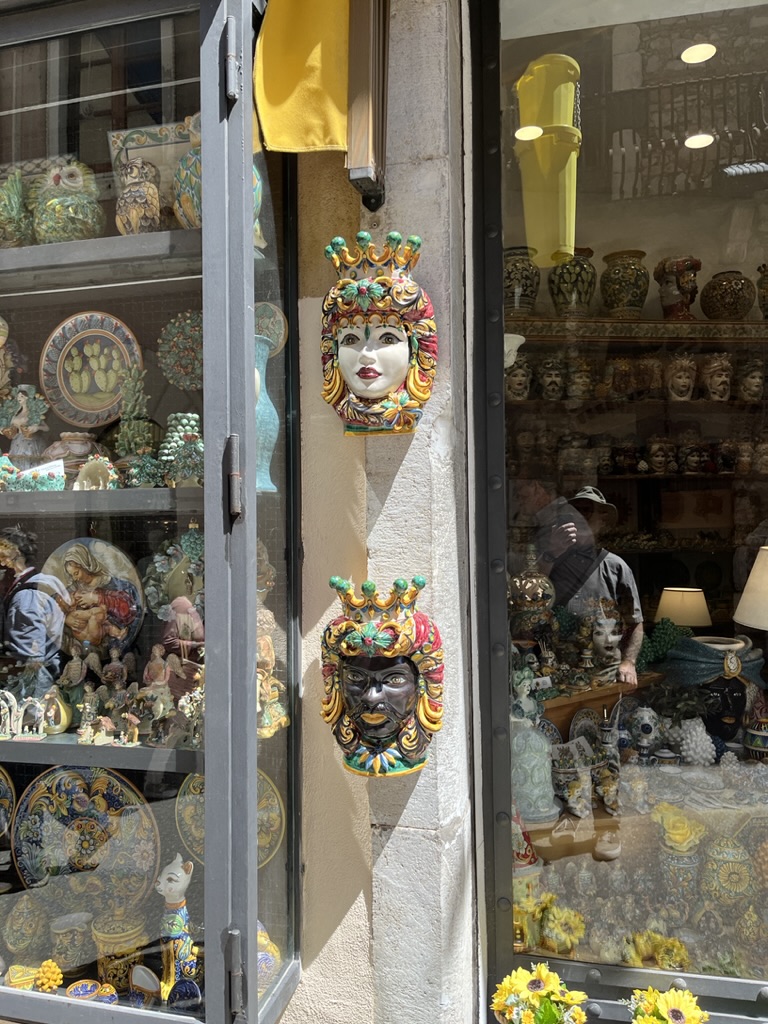
Our guide explained that this relates to a folk tale about a dark stranger who comes to town and woos a local girl. They are set to marry when she discovers that he is already married back home. So she cuts off his head and plants it in a flower pot – watering it every day with her tears. The moral is ‘don’t mess with Sicilian women’.
Back at the ship we had time to grab lunch and then spent some time blogging before:
- 4:30 – lecture “The Italian Renaissance”
- 6:30 – lecture “Naples, Pompeii & Herculaneum”
- Dinner
- BBB 11/27 – ’nuff said.
At some point in there we left for our next port, saying good bye to Sicily.
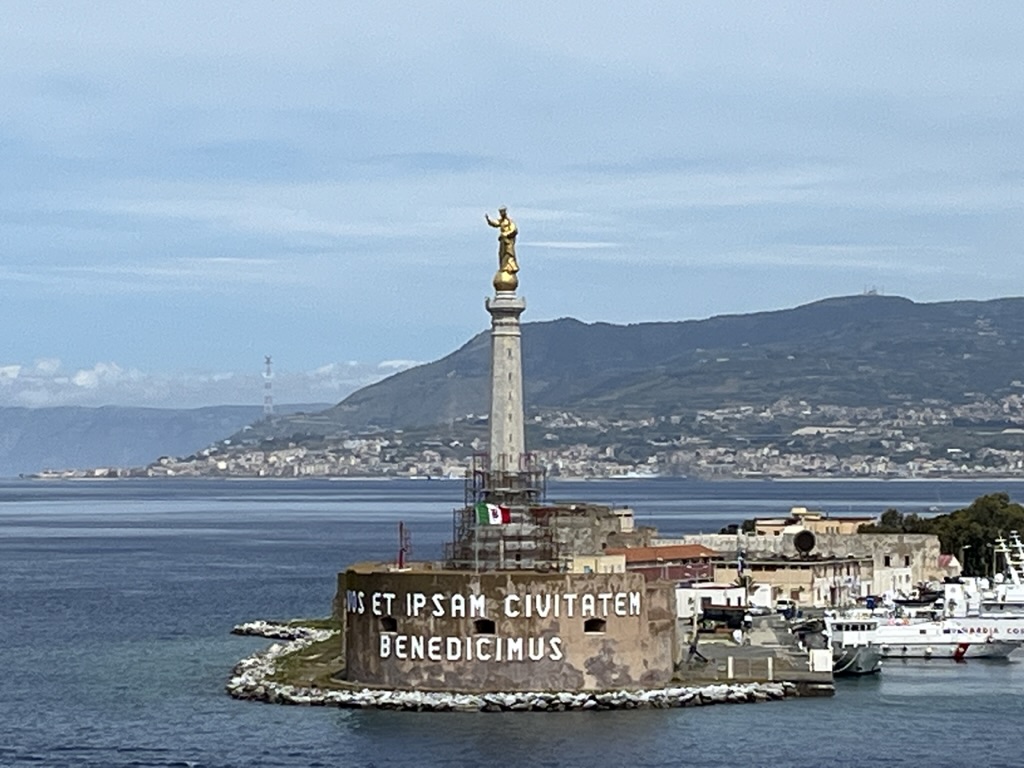
Statue of Mary in the harbor entrance bestowing a blessing. Nice place.
We may have to visit again,
R
Cheryl’s Factoids:
- Our guide said Sicily is the site of many of the foundations of Homer’s “Odyssey” stories. (Cyclops – The “pygmy” elephants that were once found on Sicily were some of the smallest elephants that ever existed. Their skulls have a very large nasal opening in the forehead between the eyes and this may be the foundation of the story about the cyclops) (Scylla and Charybdis – Greek mythology sited them on opposite sides of the Messina Strait between Sicily and Calabria, Italy. There are natural whirlpools in this strait due to the compressed current running over the uneven rift bottom – the local fishermen know were the whirlpools are and avoid them) (An island near Scylla and Charybdis is where the sirens lived – they would wait for passing ships and sing their song to lure the sailors to their death). It was on the island of Sicily that it is said Demeter and Persephone were picking flowers when Hades stole Persephone away to his underworld kingdom.
- ITALIAN RENAISSANCE: Before and during the Black Death (which wiped out 40% of the population of Europe in the 14th century), people had a very spiritual world view. With the plague mostly controlled by quarantines along with the rise of international trade and financial institutions, city-states were less dependent on the church (although great cathedrals with relics attracted pilgrims which built up markets, hostels, and transportation) and more interested in a humanistic world view. In the 15th century, there was great interest in a revival of the ancient Roman and Greek world. The linear prospective was rediscovered, so sculptors and painters started making statues and pictures that were three dimensional, and Brunelleschi designed a egg-shaped dome that could span over 50 feet without needing flying buttresses (to push the walls back into place while they held the heavy roof up)- this was a great invention as cities could now make buildings that took up a lot less space without having to tear out so many people’s houses. The three great artists of the Renaissance are Da’ Vinci, Michelangelo, and Raphael. Rich people/popes started collecting artists and literature, creating museums and libraries.
